

WILD WALK
SEEKING THE SUNRISE ON TORRIDON’S SNOWLINE
Tread Carefully
The future of our footpaths Under the Ice Life as an Iceland glacier guide Mountain Skills Winter hiking safety advice
Four season boots
Ice axes & crampons
Climbing packs
GORE-TEX Pro on test




EXPLORE WELCOME TO
As we move into the coldest part of the year, our desire to be outdoors pursuing our passions remains unwavering. Embracing the early nights and challenging weather, we continue searching for the experiences that only this time of year can deliver.
Adapting to change is a common thread in this issue. We meet climber Masa Sakano, whose story is the focus of a new film, and we chat to him about swapping Japan for a life in the Scottish Highlands. Our ambassador, Alex Staniforth, spent seven weeks running all 446 of the Nuttalls in England and Wales, showing us how to build resilience when every day starts as an unknown.
Change is a vital part of product development. In this edition, Petzl give us the lowdown on their Reactive Lighting technology, and we put the new GORE-TEX Pro through its paces outdoors. Helping you to adapt to the changing seasons, we’ve got proven gear that’ll keep you warm and dry, plus winter hiking safety advice from our friends at Glenmore Lodge. If you’re looking for inspiration on where to head, Sophie Nicholson’s Torridon trip is the perfect place to start.
See you out there.
ellis-brigham.com

04. DIARY: WHAT’S ON
All the essential events for your autumn and winter calendar.
06. SPOTLIGHT
Alex Staniforth on climbing all of England and Wales’s mountains.
08. TECH TALK
The head torch technology that’s leading the way forward.
10. HEAD TORCHES
Our top picks for all types of outdoor adventures.
13. MASA SAKANO
The mountaineer who left Japan for the Scottish Highlands.
18. ICE AXES AND CRAMPONS
Technical hardware to carry into winter mountains.
Proud to support

20. FOCUS ON: PATHS
The issues affecting our footpaths in the modern age.
24. CLOTHING
Layers for safe, comfortable excursions into the cold.
28. FIELD TEST
On-the-mountain experiences with the new GORE-TEX Pro.
30. WOODLAND WANDERS
The best places to witness autumn’s splendour.
36. CLIMBING PACKS
Durable haulers built to handle technical gear for winter.
38. TORRIDON SUNRISE
A frosty journey into Scotland’s enchanting wilderness.

44. WINTER WALKING BOOTS
A range of 4-season options for cold weather hikes.
46. WINTER HIKING SKILLS
Glenmore Lodge’s Derek Bain shares his essential tips.
49. SAFETY GEAR
Items that can save lives when the going gets tough.
50. COOL CYMRU
6 Welsh peaks that are at their best in the colder months.
52. FROZEN FRONTIER
Jessie Leong on her life as a glacier guide in Iceland.
60. BUYING GUIDE
How to layer and pack for runs in challenging conditions.


For more inspirational content and ideas, follow us on Facebook and Instagram. We’d love to hear about your adventures – share them with us using the tag #ellisbrigham



62. TRAIL RUNNING GEAR
Our head-to-toe favourites for winter trails.
64. WINTER ACCESSORIES
Handy items that will elevate any outdoor experience.
66. TEAM TALK
Store manager Alex reports back from his Peruvian quest.


Cover photo: © Johny Cook
DIARY


WELSH 3000S WINTER CHALLENGE
Plas y Brenin, Eryri, January 2026
Our partners Plas y Brenin invite you to take on all 15 of Eryri’s highest peaks in a ve-day fully guided winter adventure. Starting with the highest point in Wales, Yr Wyddfa, participants will climb iconic peaks including Crib Goch, Glyder Fawr, Tryfan and Carnedd Llewelyn, while taking on 14,000ft of elevation over the course of 30 miles. It’s a real test of tness and resilience –with some of the UK’s best mountain scenery along the way.
If you’re a seasoned summer hillwalker but don’t have much winter experience, this will provide you with some excellent winter skills. Already negotiated some winter mountain terrain before? The challenge will be ideal for developing your capabilities further.
Head to pyb.co.uk for dates and to sign up.
Scan for more information, up-to-date listings and to book your place


Demo: HOKA
Aviemore, 20th October
Join our Aviemore store team and endurance athlete Jenny Tough in the beautiful Cairngorms National Park to test out the latest trail running footwear from Hoka.
Event: Kendal Mountain Festival - Snow Night Kendal 22nd November
In collaboration with The North Face, we’re kicking o the winter season in style with lm premieres and inspiring speakers from the global ski and snowboarding community.
Film: Mountains on Stage Screenings nationwide 2nd – 11th December
From freeride skiing rsts to ascents of the most demanding mountain routes, the winter edition of Mountains on Stage showcases inspiring stories.
Event: Winter Walking Festival Glenmore Lodge, Cairngorms 5th – 7th December
Join our friends Glenmore Lodge for a weekend to learn new skills and discover winter adventures at a level to suit you – and in a friendly and supportive environment.
Event: Northern Traverse 28th March – 1st April 2026
A spectacular 300km ultra race across fell, dale, and moor, starting on the west coast of England and nishing on the east coast at Robin Hood’s Bay.
Talk: Training for a Mountain Ultra Bristol 6th November
Thinking of trying ultra running? Charlie from Beyond Ultra will walk, or run, you through all the elements and exactly what it takes to complete big distances.
You never stopped pushing the Nano Puff.®


Neither did we. Redesigned with improved fit and performance.
Photo: DREW SMITH © 2025 Patagonia, Inc.
ALEX STANIFORTH AND THE 446 CHALLENGE
Our ambassador Alex on his marathon summer of fundraising.
Writer: Sophie Nicholson
“Music and sheep got me through.” It’s a quote that sums up both the absurdity and the emotional depth of Alex Staniforth’s latest endurance feat: becoming the fastest person to summit all 446 mountains (or Nuttalls) in England and Wales in one continuous, self-powered push. The gruelling expedition, which he dubbed the 446 Challenge, saw him cover over 3,000km, running up every peak and cycling between them, all in just 45 days.
“I’m not sure it’s sunk in,” Alex admits. “You become so focused on each mountain and stage that you crave the mundane, but once the challenge is done you crave the adventure again. When something takes over your life for nearly six months, naturally there’s going to be a crash afterwards. I’ve been feeling pretty lost since to be honest.”
The 446 Challenge raised funds and awareness for Mind Over Mountains, the mental health charity Alex cofounded. “It was about doing something for others who are struggling – especially those who feel like they’re not where they ‘should’ be in life.”
Suicide is now the biggest killer of people under 35 in the UK, and Alex wanted to open up the conversation. “I don’t have a million followers or a reality TV backstory, so I need to come up with more ridiculous challenges to raise meaningful funds. People like to watch me suffer.”
Alex’s past adventures include two Everest attempts, the National 3 Peaks Run, and a self-powered link up of all of the highest points in the 100 historic counties in the UK.

But this one, chosen to mark his 30th birthday, had a deeper motivation. “I’m not interested in races,” he says. “I want to push the bar, find out what’s possible. The variety of terrain played to my strengths, and I thought the duration was long enough to build momentum without burning out.”
If Everest is all about one shot at a summit, the 446 was relentless. “They’re totally different challenges,” Alex says. “Some of these mountains took five minutes from the road, others were soul-destroying. It became a tickbox exercise. You turn up blind, with no expectations, and for every ‘bad’ mountain there was one that redeemed it.” Planning a challenge like this is a feat in itself. Thankfully, Alex had help from his friend Dan Beaumont, who took on expedition manager duties. “He’s a wizard with logistics. The Welsh Nuttalls (mountains over 2,000ft with at least 15m of prominence) had been done before so we had some support there, but the English ones were a blank slate. Even deciding which list of mountains to use was a challenge in itself – we went with the Nuttalls for their variety and spread.”
The motorhome they used became a rolling base camp, and a crucial part of making the whole thing sustainable. “It allowed for some consistency. In past challenges I tried to wing it, but you can’t do that over 45 days. Still, there was never enough time in the evenings. It always felt like a countdown. There was a routine: protein milk, compression boots, cherry juice, legs up the wall, shower, food – all while doing admin and social media.”

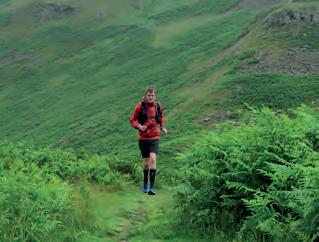
“I felt lucky to have chosen this suffering – most people don’t get that choice.”

DIGGING DEEP
Hamstring problems, paths that didn’t exist, fallen trees, horrendous weather, mountain meltdowns… this was a proper hardcore slog. Yet even in the most souldestroying moments, he kept on trucking. “I never had a good enough reason to quit,” Alex says. “The key was breaking it down into one mountain at a time.”
When things got tough, the mental health aspect of the challenge took on deeper meaning. “I felt lucky to have chosen this suffering – most people don’t get that choice. The outdoors reflects mental health so closely. Storms pass, skies clear, but you have to keep moving. And just like mental health, you can’t do it alone. I had a team. I had support.”
That support came in many forms – from flapjacks from strangers to heartfelt messages from people following his journey. “One guy, Ian, kept coming out to meet me, and on my final day, a friend’s young son said he’d met his hero and now wanted to climb more mountains. That meant more than the record.”
While he hadn’t set strict timings for him to adhere to, he admits his predictions were ambitious at best. “I perform better when I’m relaxed,” he says. “But I think I
was only on time once.”
If he could go back and give himself a pep talk before day one, what would he say? “Don’t hold back, and do things even when you’re tired. You only get one shot,” he says. “I’d also have packed more waterproofs… and not created quite so many versions of the same spreadsheet.”
So what now? “Honestly, I’ve had a bit of a quarter-life crisis,” says Alex, laughing. “I don’t know how I could top the 446, and maybe that’s OK. These challenges can be about validation and trying to fill a void. I didn’t hit my fundraising target and that hurts more than the physical side. Right now, I want to help others behind the scenes.”
His final message is simple: “It always seems impossible until it’s done. People will doubt you – but with the right people around you, anything is possible.”
If you want to donate to this excellent cause, go to the fund raising page at justgiving.com/page/446challenge
GLOW WITH THE FLOW
Shedding light on Petzl’s innovative
Reactive Lighting technology
Writer Will Renwick

If you’ve ever been halfway along a dark trail, fumbling to adjust the brightness on your headlamp, you’ll understand why Petzl’s engineers have been quietly obsessed with a simple question: what if the light could simply react to the conditions by itself?
That’s the idea behind Reactive Lighting, Petzl’s adaptive beam technology that’s been evolving since its launch in 2012. Rather than leaving you to constantly cycle through settings, the headlamp does the work, adjusting brightness in real time based on your surroundings.
“The principle was always about getting the most from relatively small headlamp batteries,” Petzl’s Corin Burdon explains. “The lighter the headlamp, the more comfortable it is, especially for moving fast. But that means you need to use your energy wisely.”
A small sensor on the front of the lamp continuously analyses the ambient and reflected light. Look down at a map or find yourself at a lit aid station during an ultra running event, and the beam automatically dims in order to conserve battery life. Glance back up into the pitch-black hills, and it instantly brightens to give you the reach you need. On the latest NAO RL and SWIFT RL models, there’s even a movement sensor that tweaks how reactive the system is. Slow down or stop, and it’s free to drop the output further. Start running, and it holds more light so you can keep reading the ground ahead.
It’s clever, but it’s not the only thing worth knowing about headlamp tech. Beam type, battery choice and even where the battery sits can make a big difference to how your light performs.





Beam types and brightness
With headlamp brightness, which is measured in lumens, more isn’t always better. For camping or general use, you don’t need a beam that can punch hundreds of metres into the darkness. A short-range, wide-angle beam will comfortably light your tent area or the path to the toilet block.




Choosing a battery


In more technical situations, like alpine mountaineering or night time trail running, a brighter bulb with greater reach becomes more important. Many of Petzl’s performance models balance this by o ering low-power modes for proximity lighting and high-power modes for distance, with Reactive Lighting constantly shifting between them to match your needs.

Rechargeable batteries are the smart choice for most users and are Corin’s recommended choice. He gives Petzl’s Core rechargeable battery as an example. It provides more available energy than AA or AAAs, works better in the cold, maintains brightness for longer, and can be recharged hundreds of times. Standard batteries still have their place, however, as they’re easy to nd anywhere in the world and o er an exceptionally long shelf life. For the best of both worlds, there’s Petzl’s Hybrid Concept, found on models like the TIKKINA, TIKKA, and ACTIK, which lets you swap seamlessly between them.



Corin emphasises that it’s also about the quality of the beam.
“The best headlamps give an even, balanced spread without bright spots or distracting rings” he explains. Petzl, he says, opts for a relatively cool light colour – cooler than the warm glow of most household bulbs – which improves visual clarity and reduces eye fatigue over time.



Battery placement


Brightness versus battery life
“Think of your headlamp like a car,” says Corin. “Drive everywhere with your foot to the floor and you’ll burn through fuel quickly. Likewise, if you run a headlamp at full power all the time, battery life will be short.”




Ever noticed some headlamps with a pack strapped around the back of the head? Larger batteries can make a front-heavy headlamp uncomfortable. By splitting the weight with a lamp at the front and battery at the rear you get a more balanced feel, especially when moving quickly. It also leaves space for extras like a rear red light to make you more visible on the road.


Using Reactive Lighting


Reactive Lighting’s main trick is avoiding that waste. But there are user habits that help too. Petzl recommends avoiding storing your battery fully discharged or fully charged for long periods – over summer, for example. Instead, keep it at around 30 to 40% charge. This prolongs battery health and ensures it’s ready for the darker months.





Jargon buster
Lumens – A measure of how much visible light a headlamp produces; higher numbers mean a brighter beam.

When running or hiking, Petzl’s advice is to angle your beam down slightly more than you might with a traditional headlamp. “This maximises the area of useful light while keeping power usage low,” explains Corin. “When you need to see further, simply raise your gaze and the beam will brighten instantly."




Burn Time – How long the headlamp will run before the battery needs recharging or replacing.
Hybrid Power – Petzl’s system that lets you use either a rechargeable battery or standard disposables in the same headlamp.


So that’s Reactive Lighting. Long story short, it’s technology that enables you to spend less time adjusting and more time focussing on the journey.


mAh – Short for milliampere-hours, this tells you how much charge a battery can store – higher numbers mean longer potential run time.
IP Rating – A code showing how resistant the headlamp is to dust and water; the higher the numbers, the better the protection.



Explore our Reactive Lighting range and more from Petzl at ellis-brigham.com/petzl

Beam Pattern – The shape and spread of the light beam, a ecting whether it’s better for close-up tasks or long-distance visibility.



BEAM ME UP ULTIMATE
HEAD TORCHES

Petzl Nao RL
£160
Well-regarded for its long-distance spotlighting, the Nao boasts a powerful 1500-lumen beam, a rear red light, and Petzl’s unique Reactive Lighting technology. A favourite with ultra-runners, its sensors automatically adjust brightness and beam pattern depending on your surroundings, conserving battery life while ensuring the right level of illumination.


Petzl Actik Core
£77

Ideal for multi-day, o -the-beatentrack adventures, this 625-lumen head torch can run o its own rechargeable battery or three AAAs, giving you the option of having a backup if you’re out for longer than you expected or you can’t recharge on the go. On its max setting, it can reach up to 115m, and you’ll get as much as 100 hours of burn time on the lowest setting.
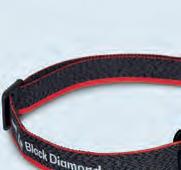


£45
An outdoor all-rounder, the Spot features multiple white and red lighting modes for easy transitions between activities. PowerTap technology lets you instantly boost the beam to its maximum 400-lumen output. Supplied with three AAAs, it is also compatible with Black Diamond’s rechargeable battery (sold separately).


With an IP67 waterproof and dustproof construction and 500-lumen output,
settings to help you balance brightness and burn time. Night vision modes in the Storm is a hardy, all-weather head torch ideal for year-round hiking and climbing. It has a rechargeable lithium-ion battery and includes dimmable red, green, and blue increase its versatility.




£53
A super-compact head torch weighing just 43 grams, Petzl made the Swift LT for weight-critical outdoor missions. Achieving 380 lumens on max, with three white lighting levels plus a red light for night vision, it’s a capable performer. USB-C rechargeable, rain-resistant casing, and a reflective, adjustable headband enhance its usability.
























£20
Ideal for weekend camping trips, this fuss-free head torch has a comfortable headband and three white lighting modes: continuous, dimmed, and strobe. On max, it achieves 300 lumens and can reach up to 55 metres. It runs on three AAAs (included) but is also compatible with the BD 1500 rechargeable battery (sold separately).
Black Diamond Spot 400
Petzl Swift LT
Black Diamond Astro 300

Your unflinching mountain
Latok GTX Jacket
Interview
A LONG WAY FROM HOME, BUT RIGHT WHERE HE BELONGS
Meet Masa Sakano: the climber who left Japan for the love of Scottish winter climbing – and who’s now the subject of an Ellis Brigham and Rab documentary premiering this autumn. We spoke to him ahead of its launch.
Interviewed by: Will Renwick

Some people move countries for work. Others for family. Masa Sakano came to Scotland for the iced gullies and wild, unforgiving ridges of its winter mountains.
Originally from Japan, Masa rst arrived in the UK in 2001 and eventually settled in the Highlands in 2013, his decision to relocate driven by a love for the very particular kind of adventure found in Scottish winter climbing. “There’s not quite so much winter climbing in England,” he explains during a Zoom call. “So when I lost my job down south, I didn’t see a reason to stay. I wanted to live where the mountains were.”
Since then, Masa has become a quietly respected gure in the close-knit Scottish climbing community and is one of
Rachel Sarah (the lm’s producer and director): “Masa’s parents are both such key gures in Masa’s story and it is clear that they have shaped his attitude to living his life fully and appreciating life and nature. Their presence in the lm speaks to that positive generational impact as well as the duality of the concept of home for many people who live far from their family and loved ones.”
Masa Sakano: “On Deep Throat, Cairn Gorm. My incredibly loyal climbing partner Ian Williamson is at last relieved of his four-hour-long belaying duty. It was my record-longest lead of a pitch.”

“very few” Japanese or East Asian climbers regularly putting up winter routes in the Highlands. It’s this uncommon story that caught the attention of filmmaker Rachel Sarah, who has spent the past year documenting Masa’s life for a short film, shot between Scotland and Japan.
While Masa began climbing just a year before he left Japan, it’s here in the UK that his skills and philosophies have taken shape. In summer, he favours traditional climbing. In winter, it’s all about the mixed conditions and unpredictability that make Scottish mountaineering so unique. “In other places, like North America or the
Alps, sometimes climbing can feel more ‘safe.’ There are often bolts. Stable conditions. Sometimes the routes are prepared for you,” he says. “But to me, adventure means doing things by yourself, taking responsibility. That’s why the climbing ethics in Britain really speak to me.”
Scotland’s accessible ruggedness, and its tight-knit community, have kept him rooted here. “The hills aren’t huge,” he says, “but you don’t have to travel for three days to get one route in. And people look out for each other. The community is small, especially in winter, but friendly and strong.”
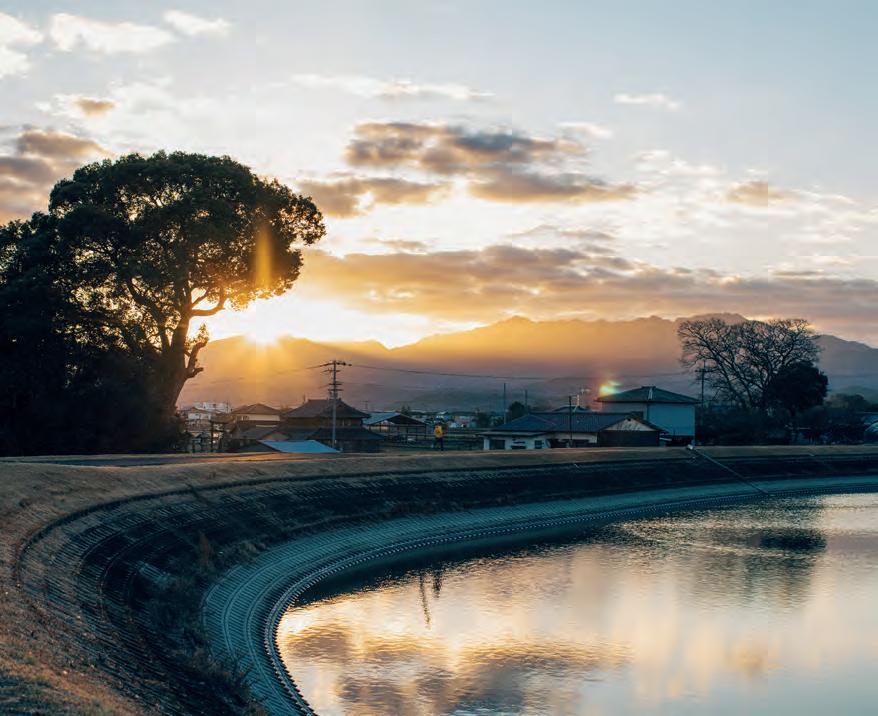

“FOR ME, IT’S NOT ABOUT GETTING TO THE TOP OF EVEREST. IT’S ABOUT HOW YOU GET THERE.”
Rachel: “We worked with local cinematographers, Gaku and Til (Glimmer Film), to capture our Japan-based scenes. Working under remote direction, they spent time with Masa and his family in his hometown of Miki, Kagawa. One of my hopes as director was for a sunrise run scene with golden light, to echo some of Masa’s past memories of running with his father and brother. We were lucky enough to have some beautiful morning light as the sun peeked over the mountains.”
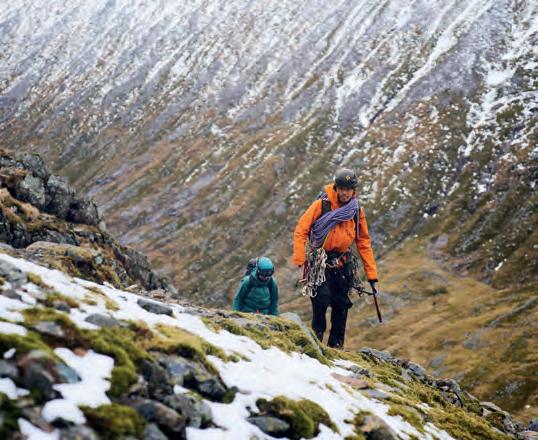
Masa: “Winter 2024/25 was mild with little snow or ice. This shows me during the International Scottish Winter Climbing Meet 2025. As host climber, I was desperately searching for winter climbing potential high up on Ben Nevis while paired up with the visiting Hungarian climber Zsuzsanna Saitz.”
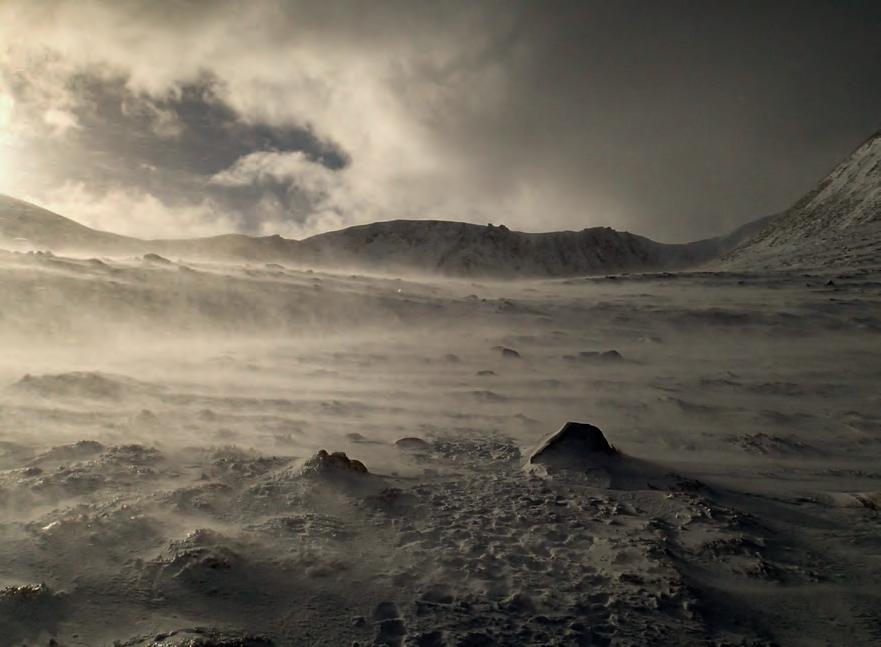
Masa: “A morning walk-in to Coire an t-Sneachda in strong winds. It was an unsuccessful winter climbing day in the Cairngorms through harsh weather (50-70mph wind forecast). On the day, we walked in and attempted to climb a route but backed off due to the harsh weather conditions.”
Despite his modesty, Masa has made his mark. Among his proudest moments is a first ascent on the north face of Beinn Chùirn, a face that had never seen a recorded climb until he explored a line during a stormy, high-avalanche-risk season. “It wasn’t the hardest climb,” he admits, “but it took imagination. And now others have repeated the route, so it feels like a contribution to the climbing community.”
It’s this spirit – quiet, self-motivated, and rooted in exploration – that defines Masa’s approach. He’s not chasing records or recognition. He’s just climbing the way he believes it should be done. “I like what Alex MacIntyre once said: ‘Climbing becomes passion, but style becomes obsession.’ That’s it for me. It’s not about getting to the top of Everest. It’s about how you get there. Who you are when you do it.”
Though his roots are far from the Highlands, Masa doesn’t feel like an outsider. “That’s one of the things I love most about Scotland. People treat me like any other climber. I’m just part of the scene.”
Still, he misses some things about Japan – hot springs especially. “It would be amazing to finish a day in Glencoe with a soak in a natural onsen,” he laughs. “But I’ve adjusted. This is home now.”
And does he have plans for more new routes? Of course. He smiles: “Yes – but I don’t have to share where they are, do I?”
Rachel: “Hamish Frost hangs above Masa as he climbs, trying not to disrupt the snow. Deep Throat (V 6, Cairngorms) is not the most straightforward of climbs to rig for lming, however we were lucky that this was our Plan A and Hamish knew the route and rigging well to be in the exact right spots.”
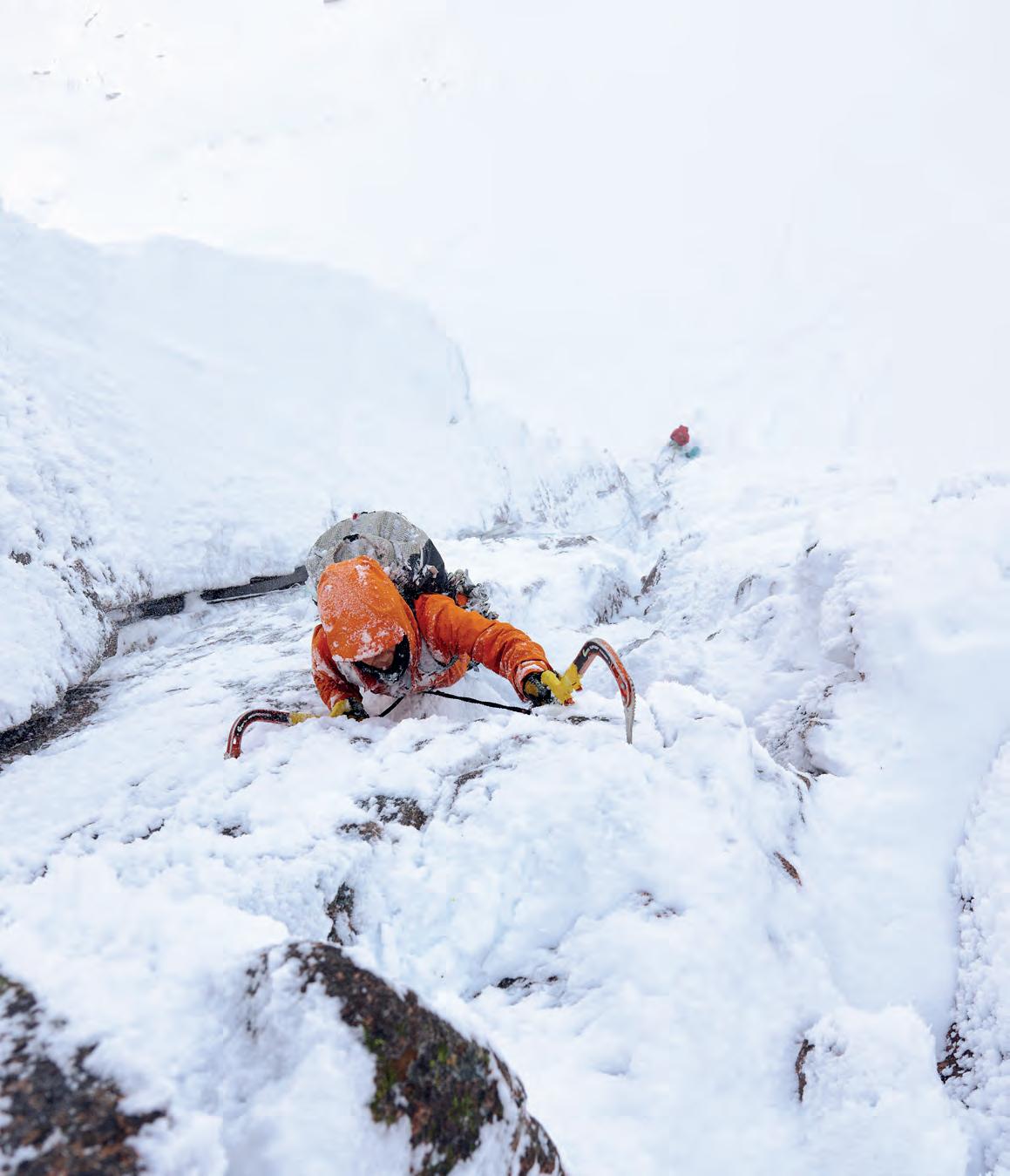
“I HAVE LONG LOST THE SENSE OF TIME, BUT KEEPING FOCUS HERE IS THE KEY TO SUCCESS AND SURVIVAL”
SHOP THE RANGE




THE SHARP END

ICE AXES AND CRAMPONS
Grivel G12 New Matic Evo £170



Head into the mountains this winter, and it won’t be long till you spot a pair of G12s. B2/B3 compatible, their stable and versatile 12-point design makes them a mountaineering classic. The four serrated rear points improve bite and security, ensuring con dence when traversing moderate terrain. Anti-balling plates prevent snow buildup.
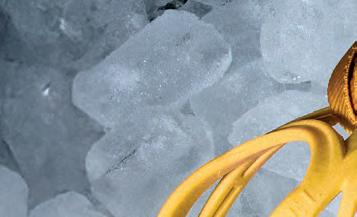
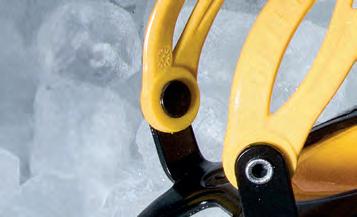



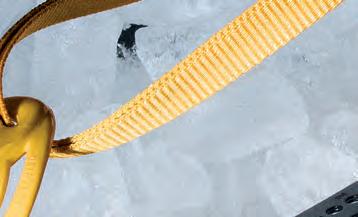












Petzl Dart Leverlock Fil £245




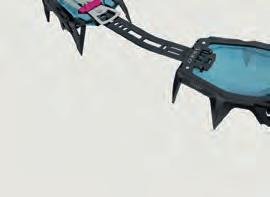
Blue Ice Gri n 12 £180



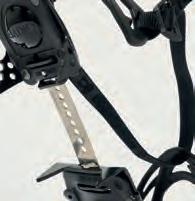
Perfect for technical winter terrain, the C3-rated Dart crampon features fully modular front points: dual for steep snow, asymmetric duals for pure ice, short monos for ice, and long monos for mixed climbing. Every component is replaceable or interchangeable, delivering long-lasting performance and extending the crampon’s lifespan.


The lightest in its class, this innovative 12-point crampon features a unique adjustment mechanism for a fast, secure t, making it perfect for mountaineers and guides who frequently change their setup. It comes with automatic and semiautomatic attachment systems, making it compatible with all boots tted with heel welts.






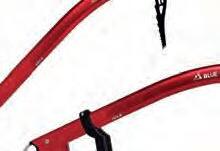


Blue Ice Akila Adze & Hammer £150 (each)
that can be optimised according to the terrain, with a removable hammer, weights, and a PUR’ICE pick that can be swapped with other options from Petzl’s collection. Expect a balanced swing and an ergonomic handle that adjusts to three positions to accommodate all hand sizes.
These lightweight ice axes are ideal for fast-moving alpine missions. Adjustable pommels and textured grips give control on technical ice but can be removed for snow plunging. The one-piece chromoly steel head inspires con dence on steep terrain. Supplied with pick, adze, and spike covers, you can protect your gear when carrying the axes in your pack.
Grivel Monte Rosa New Classic £110


For hillwalking in the UK during winter, these C1-rated, 10-point crampons from Grivel are a reliable choice. The forgiving New Classic binding and linking bar flex with your boot as you walk. They feature anti-balling plates, tool-free adjustment, and the front and rear plastic baskets give an easy-tosecure, con dence-inspiring t.

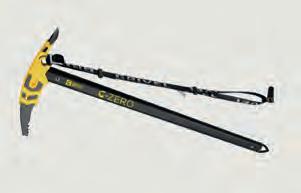
Grivel G Zero £75
Grivel’s G Zero ice axe is ideal for glacier walking and winter hill walking. It features a steel head and adze, with a removable cover to insulate against the cold metal. A straight aluminium shaft reduces weight, the adjustable leash adds security, and the rubber tip protects the spike when the axe is kept away in storage.


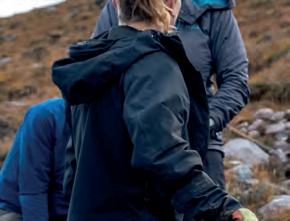

Focus On







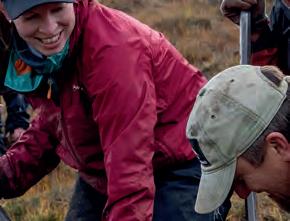
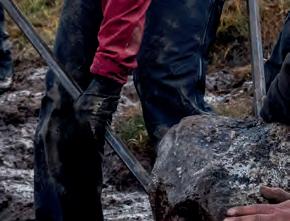

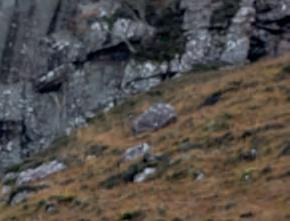

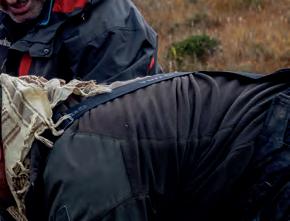
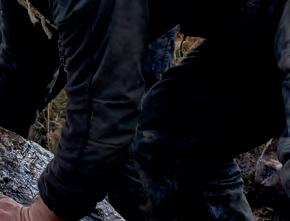
PROTECTING PATHS


Writer: Amy Marwick



Social media has opened up the outdoors to more people than ever – but at what cost? Popular trails across the UK are buckling under the pressure of viral fame, and without action, we risk loving these places to death.


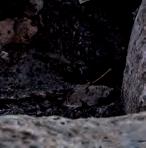
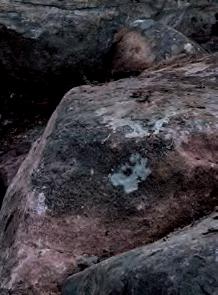






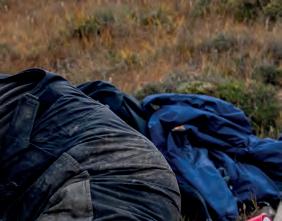



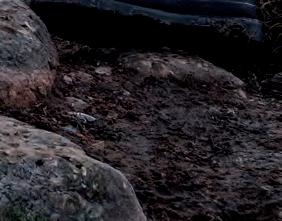

A stunning snap of a waterfall. A drone shot of a windswept ridge. A viral Instagram Reel of a sunrise dip in a mountain pool. Just one post can spark thousands of visits to a once-quiet beauty spot.
Since the COVID-19 pandemic, more people have discovered the bene ts of getting outdoors – something that should be an all-round good thing, for health, for education and for local economies. But what happens when thousands descend on the same ‘bucket list’ view in one weekend? We’ve all heard the horror stories of secret sunrise spots becoming quagmires of toilet paper, remote glens echoing with the hum of drones, and mountain pools left littered afterTikTok fame. Just this year, Derbyshire local Stuart Cox voiced his frustration on social media at the increasing number of stone stacks being built near Mam Tor, causing damage to walls that have stood for centuries. In Skye, the fallout was even more severe after scorched trees and littering near Glen Brittle led to a Danish influencer being publicly criticised after a visit. Meanwhile, mountain rescue teams in North Wales report being stretched to their limits due to underprepared visitors.
Cause and e ect
With 225,000km of rights of way across England and Wales, and at least 1,100km of established upland footpath in Scotland, there’s certainly no shortage of paths to follow. But while social media has opened doors for many, it’s also bringing a less Instagram-worthy reality to the surface: footpath erosion.
“As the number of people increases, footpaths that were once adequate have become unsuitable for the growing numbers we’re seeing across the path network,” says Ewan Watson, Outdoor Access Projects Manager at the Outdoor Access Trust for Scotland (OATS).
In popular spots across the UK, footpaths are disappearing. Once-walkable routes have become bootclinging bogs or ankle-breaking gullies up to three metres deep. As walkers try to avoid being swallowed up, paths widen, habitats are trampled, peat bogs erode, and the scars on the landscape grow deeper.
And it’s not always due to people trying to keep their feet dry. “While working on footpath construction across Scotland, I’ve seen people walking into previously undisturbed areas to get a sel e – often prompting others to follow and try to get a similar photo,” says Ewan.
Large numbers of people straying o the beaten track doesn’t just cause damage to nature, it can make navigation more di cult as routes become obscured, it can create slip hazards on stony trails, and water courses can become choked as soil is washed away by the rain.
Meanwhile, the climate crisis is only compounding the problem. “An increase in prolonged dry spells followed by heavy downpours is having a notable impact on the condition of footpaths,” continues Ewan, “especially those constructed with aggregate material. This, combined with increased footfall, is eroding path surfaces at an increased rate.”
Mending mountains
The good news? There’s a lot we can do to alleviate the problems. From education and smarter route choices to hands-on repair work, grassroots efforts are already helping turn the tide. Take the BMC’s Mend Our Mountains (MOM) campaign. Since launching, it’s raised over £1.4 million to fund the restoration of more than 80km of fragile footpaths, and to support repairs spanning 800km of upland terrain throughout the UK. Their community-led Get Stuck In volunteer days offer a way for anyone to get involved themselves. In June, 13 MOM volunteers returned to Yr Wyddfa (Snowdon) to

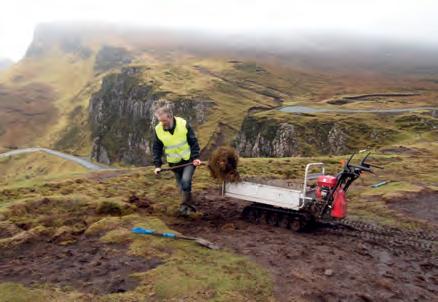
repair severe erosion on the route to the Watkin Pools, an area overwhelmed by Instagram-driven visitor footfall.
Fix the Fells also continues its mission to protect Lake District paths with the help of a huge volunteer network. In 2024, a total of 20 rangers and 140 volunteers carried out an unprecedented amount of work maintaining upland trails. And OATS has been working to protect the Highlands since 1998. Most recently, their It’s Up to Us campaign, has raised over £250,000 to repair the badly eroded path on An Teallach and their Skye Iconic Sites Project raised over £760,000 to combat the problems underfoot caused by overtourism at the Old Man of Storr, the Quiraing and the Fairy Pools.
Still, while fundraising campaigns and volunteers have stepped up, the financial reality of maintaining these paths paints a tough picture. Basic repairs might cost £15–20 per metre, but gravel or aggregate paths can cost over £100 per metre. Hand-laid stone can run up to £300 per metre or more, and that’s not to mention the drainage, signage, ongoing maintenance, time, and effort also required.
And our National Parks are feeling the pinch. Some, across Scotland, England and Wales, have seen budget cuts of up to 40% in recent years, and the UK’s withdrawal from the EU has meant access to previously available funds has ended.
Communities under pressure from tourism and a lack of investment in visitor infrastructure therefore need to consider other solutions. “A levy on businesses benefiting from the increase in visitor numbers would be one way to generate revenue that could be put towards path maintenance and improvement,” says Ewan. “But education, particularly for those visiting from overseas, is a good place to start.”
Thankfully, being part of the solution on the ground doesn’t take much. Treading lightly by staying on existing paths, and planning ahead to find other routes to help spread the load, is a great start. “We champion hidden gems and encourage walkers to discover more diverse landscapes and walking routes,” says Sophie Reindorp, Programme Manager at The Ramblers. “Our current Britain’s Favourite Path competition, for example, is all about shining a light on a whole variety of paths and locations.” Heading out with a Plan B is also a good idea if you find you arrive somewhere by car and there’s nowhere to park – it’s better to have another option instead of putting more pressure on the area.
As the outdoor community grows, so too does our responsibility to protect the places we love, but beautiful views shouldn’t come at the cost of the ground beneath our feet. “Stop to enjoy the scenery,” advises Ewan, “but ask yourself if it really needs to be shared on social media. Or could it just be a view and a moment that you and your party can enjoy together?”

Above: OATS volunteers on An Teallach (Photo: Dan Bailey).
Below: Volunteers on Skye.

ADVICE FOR PROTECTING PATHS
Do
Stick to the path and protect fragile habitats by staying on marked trails and rights of way.
Explore your options and consider taking quieter, less-travelled routes to ease pressure on overused hotspots. Heatmaps on smartwatch apps or Strava are a great way to gauge the popularity of a trail.
Use your captions wisely if you’re posting about your adventures and consider whether your route is suitable for higher footfall.
“Some National Parks across Scotland, England and Wales have seen budget cuts of up to 40%...”
Have a Plan B to help ease overcrowding in already busy areas and prevent carparks from over lling and spilling o the asphalt.
Don’t
Take shortcuts as even well-meaning actions to simplify a route can cause long-term damage.
Go o -piste where you might disturb wildlife, damage plants and accelerate erosion.
Geotag sensitive locations. If it’s a fragile ecosystem or already under pressure, think twice before broadcasting it.
Build cairns, as stacking stones contributes to path erosion and disrupts habitats.
Start res or use disposable BBQs.
Julian Digby of OATS giving a repair demonstration.

ALPINE ARMOUR MEN’S TECHNICAL CLOTHING

Mountain Equipment
Tupilak GORE-TEX Pro £500
British brand Mountain Equipment had big mountain faces and steep lines in mind when designing this GORE-TEX Pro ePE jacket. As such, you can expect plenty of alpinefocused details, including a helmetcompatible hood, AquaGuard zips, harness-compatible pockets, and pre-shaped sleeves for comfort when holding tools overhead.
Mountain Equipment Paiyu - £300 +
Mountain Equipment Tupilak GORE-TEX Pro - £500 +
Mountain Equipment Mission - £160 +
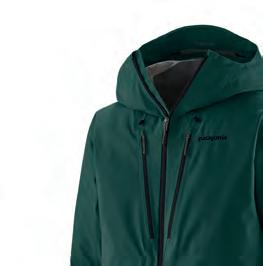

Patagonia Triolet GORE-TEX
£370

A tough, four-season alpine shell made with GORE-TEX ePE and a 75-denier recycled polyester outer, the Triolet o ers waterproof and windproof protection with reduced environmental impact. Features include a helmetcompatible hood, harness-friendly pockets, pit zips, a RECCO reflector, and a regular t for layering.









The North Face Terra Peak
£180
Lightweight and versatile, the Terra Peak is ideal for autumn hikes. It also layers easily for colder conditions. Its 100% recycled ThermoBall synthetic ll retains warmth even when it's wet, while the breathable fleece panels located under the arms enhance airflow, keeping you comfortable during intensive days outdoors.


Arc'teryx Beta AR GORE-TEX Pro
£600



New GORE-TEX Pro ePE, hardy 80-denier shell fabric, and 100-denier reinforcements deliver premium wet-weather protection. Paired with a full feature set including three pockets, this is an ideal jacket for hiking and scrambling – or for anyone who needs a shell that can withstand frequent use in demanding conditions.













Rab Mythic Alpine
£330
Designed for fast and light alpinism, the Mythic Alpine combines ultralight Pertex Quantum fabric with 900- ll hydrophobic down for warmth that packs small and performs in damp conditions. A slim t allows it to be layered under a shell, while secure hand pockets and an insulated hood with a sti ened peak tick o the essentials.


Mammut Aconcagua ML
£135
Ideal for high-output activities, this cosy mid layer is made using Polartec Power Stretch Pro, a warm, breathable, and fast-drying fleece that o ers fourway stretch and impressive abrasion resistance. Close- tting, it’s designed to t neatly under a hardshell. Extras include an under-helmet hood, thumb loops, and backpack-friendly pockets.

ALPINE ARMOUR WOMEN’S TECHNICAL CLOTHING

Alta XT GORE-TEX Pro £575
Designed for winter climbing, the Alta XT pairs a 70-denier outer with GORE-TEX Pro ePE for durable waterproof protection with reduced environmental impact. Features include a three-way adjustable and helmet-compatible hood, extended pit zips, harness-friendly chest pockets and a two-way AquaGuard front zip, all in a streamlined alpine fit.
Montane Alta XT GORE-TEX Pro - £575 +
Montane
Montane Alta GORE-TEX - £425 +







Rab Kangri GORE-TEX
£340







Built to tackle unpredictable mountain weather, the Kangri keeps you dry and protected with fluorocarbon-free 3-layer GORE-TEX ePE. A flexible sti -peaked hood, backpack-compatible pockets, underarm vents, fleece-lined chin guard, and adjustable hem and cu s ensure comfort and versatility on long treks and scrambles.
















Mammut
Crater IV HS GORE-TEX
£380
PFAS-free GORE-TEX ePE and recycled fabric deliver lightweight, breathable, waterproof performance with a reduced environmental footprint. There's also a helmet-compatible hood, pit zips, climbing-harness-friendly pockets, and pre-shaped sleeves.








The North Face
Summit Breithorn
£340























Arc'teryx Atom SV
£280










Ideal as a mid layer for climbing, hiking, and mountaineering, the Atom SV features synthetic Coreloft 120 insulation that retains warmth even when damp. Its Tyono 30 ripstop outer resists wind and light rain, stretch underarm panels allow freedom of movement, and the hood ts comfortably over a climbing helmet.
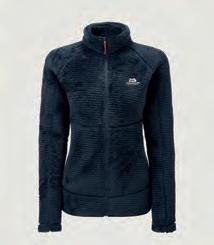
Mountain Equipment
Hispar
£175
Combining 800- ll hydrophobic ProDown with Pertex Y Fuse fabric –which has tiny interlocking Y-shaped laments for durable, downproof protection – the Summit Breithorn delivers lofty warmth even when damp, making it ideal for alpine climbing.
This lightweight yet cosy layer for mountaineering, ski-touring, or winter expeditions ts snugly over base layers and underneath a hardshell. Made from Polartec Thermal Pro Hi Loft grid fleece, it provides excellent warmth for its weight.
GORE-TEX PRO
FIELD TESTED
Interested to know how the new version of GORE-TEX Pro performs in real-life scenarios? We spoke to two outdoor experts to hear about their experiences.
In case you hadn’t heard, GORE-TEX has evolved. Over the last couple of years, W.L. Gore & Associates has been rolling out a new version of its famous waterproof fabric –one that no longer relies on PFAS “forever chemicals.” Called ePE (expanded polyethylene), the technology has already been applied to standard GORE-TEX fabrics and, as of this year, it’s now being used in GORE-TEX Pro, the most rugged and high performance option in the GORE range.
It’s a significant step forward. Not only does ePE mark a big improvement in environmental responsibility, but according to early adopters, the performance is every bit as strong – if not stronger – than before.

Test team
Rob Hoskins
Our outdoor training manager
Matt Stygall
Mountain guide & lead instructor, Plas y Brenin



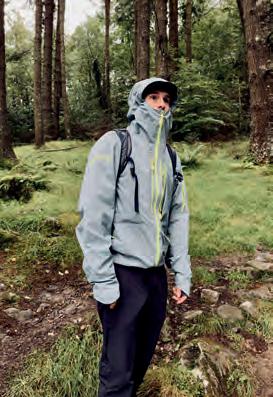

“MY
FIRST IMPRESSION WAS THAT IT
FELT INCREDIBLY SOFT AND COMFORTABLE...”
Softer, Supple, Still Bombproof
At Plas y Brenin, the National Outdoor Centre, instructors have been trialling Mountain Equipment’s latest GORE-TEX Pro jackets with ePE since last winter. Matt Stygall, the centre’s lead instructor, put in around 50 days of use across the full spectrum of UK winter conditions.
“The rst thing I noticed is how much softer and more comfortable it feels,” he says. “I’ve been using GORE-TEX Pro through its various generations for as long as Mountain Equipment has been using it. It’s always been the most protective and reliable option, but it has typically been a little sti er, at least initially. The new Pro is particularly nice to use in all types of terrain, but the biggest di erence is how it feels when climbing on steeper, harder ground, where it moves more naturally and feels less restrictive.”
That added suppleness doesn’t mean any loss in toughness either. “Scottish winter is the harshest environment I typically work in – it’s far harder on kit than the Alps can generally be,” Matt says. “With heavy packs, sharp tools, mixed climbing, and endless abrasion, the fabric holds up really well.”
We also handed one of the new jackets to our outdoor training manager, Rob Hoskins, who tested it on the Alta Via 1 in the Dolomites and during everyday use. His verdict? “My rst impression was that it felt incredibly soft and comfortable. The membrane is signi cantly lighter and thinner than the previous generation, and I can tell the di erence immediately.”
Care Counts
Both Matt and Rob flag the same point: while ePE is just as waterproof as its predecessor, the new generation of jackets and trousers do need a little more regular maintenance. That’s because the more sustainable durable waterrepellent treatments (DWRs) now applied to the outer fabrics of GORE-TEX Pro gear aren’t as long-lasting as the older, PFAS-based versions, meaning the surface can wet out more quickly if it’s not occasionally cleaned and reproofed.
“I do think it is important to keep in mind the di erence between DWR and a membrane,” Rob says. Although the shell on the surface can get damp faster, the inside of the garment remains dry – water is not getting in.”
Matt agrees, stressing the importance of aftercare: “These all-new PFASfree shells just need to be washed and reproofed a bit more regularly to keep them working really well.”
For GORE, the launch of ePE in GORE-TEX Pro is a milestone: a proven, expedition-grade fabric that’s more environmentally responsible but that clearly still delivers the protection serious mountaineers and outdoor enthusiasts demand. As Matt sums up: “I’ve used a huge amount of kit over the years and GORE-TEX Pro has always been my rst choice for serious use. I threw everything at this new version and I haven’t had to think twice about it getting damaged.”

Walking


Writer: Jazz Noble
From ancient Celtic rainforests to pine-fringed beaches, these woodland walks invite you to slow down, breathe deeply, and witness the quiet transformation of autumn.
By gently engaging the senses and activating the part of your nervous system that helps to calm the body and reduce stress, walking in nature at any time of year will bring proven bene ts. But in autumn, as the sights and sounds change and your pace slows in an e ort to savour the remaining daylight hours, it can be an altogether more grounding experience – one that invites you to notice, breathe, and simply be among the quiet transformations unfolding all around you.
It’s a time of year when the woods become a world of their own. You’ll nd the leaves changing colour, of

GO FOR GOLD

course, but you’ll also nd that the shapes and shadows look completely di erent. The forest canopy begins to open, fungal life rears its earthy head, and small creatures rustle in the crisp undergrowth. As the birds migrate, the sounds change too. Dawn’s summer chorus shifts to a quieter, more contemplative tune from the ‘left-behinders’: the robin, wren, and blackbird.
Thankfully, here in the UK you’re never too far from a forest or some kind of woodland to enjoy these sights and sounds. Humble and small, grand and tall, here are ve highlights across the British Isles to explore this autumn.


Newborough Forest
Location: Anglesey
Newborough Forest is no doubt one of the most unique woodlands the UK has to offer. Wedged between the land and the sea, with Yr Wyddfa (Snowdon) visible beyond the waters of the Menai Strait, it’s best undertaken as a full day out so you can really soak in the variety of landscapes on show here.
The forest itself mostly consists of Corsican pine trees which were initially planted to stabilise the
Glen Affric
Location: Highlands
Glen Affric is a striking showcase of native Caledonian pine forest, golden birch, and mirrorstill lochs. In autumn, the landscape ignites with a fiery palette of ochre and amber all reflected in the glassy waters of Loch Affric and Loch Beinn a’ Mheadhoin. The circular walk from the Dog Falls car park offers a manageable but immersive introduction to the glen’s sensory delights. Listen for the creak of pines, breathe in the earthy scent of moss, and keep a keen eye out for red deer moving quietly through the trees.
“Glen Affric is one of the most inspiring places I’ve ever photographed,” says professional landscape photographer Tom Watkinson. “Every time I return I find something new – it’s a place that’s always drawing me back.”
sand dunes and prevent them from covering nearby villages. Nearly 80 years since its creation, it’s a place that’s now home to wild orchids, skylarks and red squirrels. Take some of the pine-lined paths that lead towards the spectacular expanse of Llanddwyn Beach and you’ll not only have a jaw-dropping view of the mountains of Eryri (Snowdonia), but also of Llanddwyn island and the picturesque Tŵr Mawr lighthouse that sits on top of it.
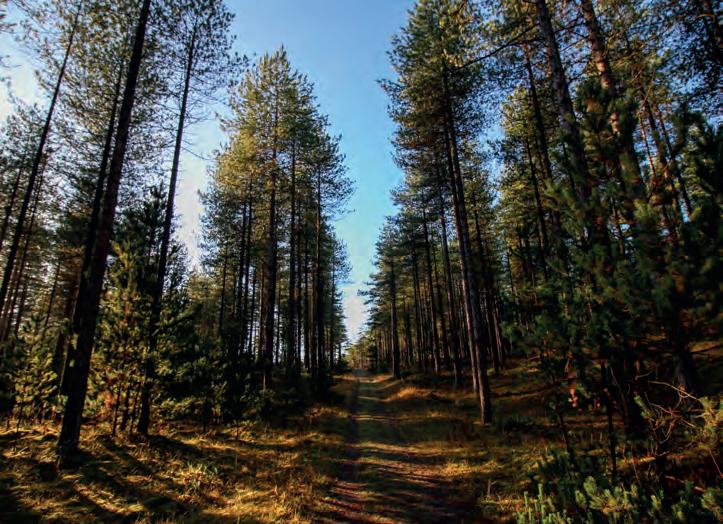




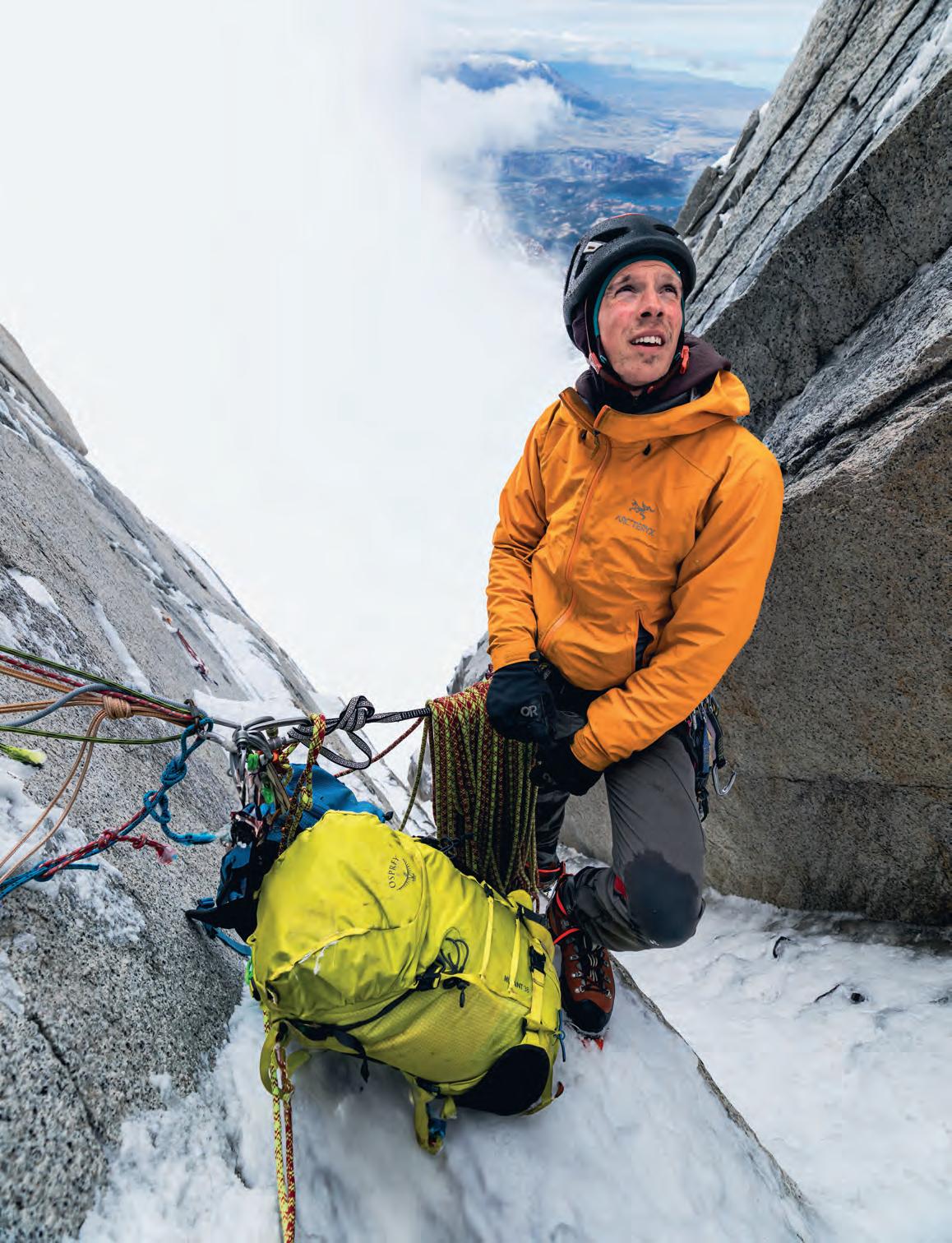
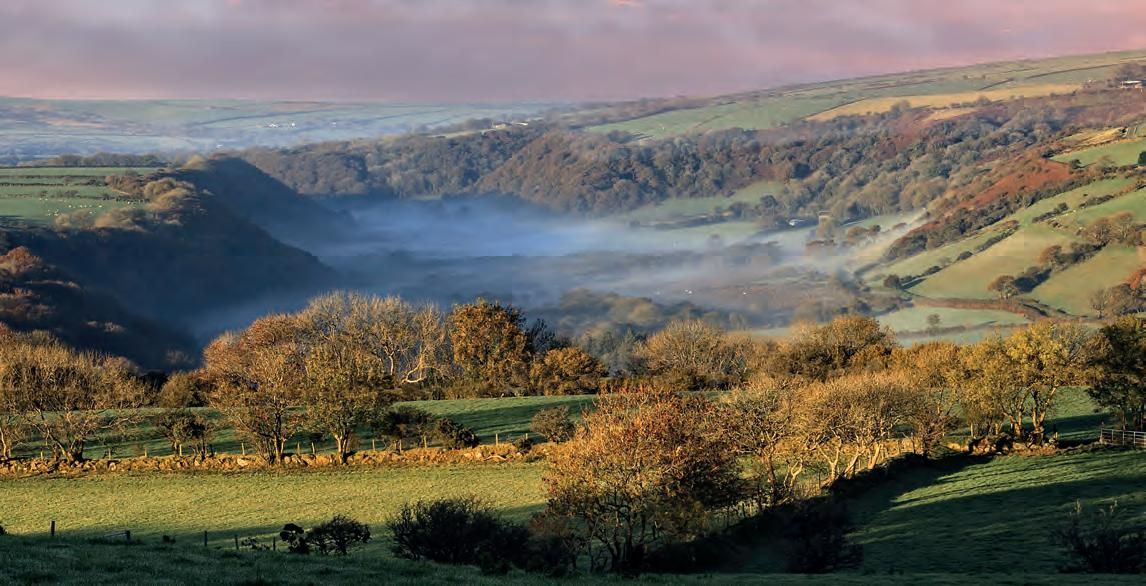
Gwaun Valley
Location: Pembrokeshire
This deep valley in the Preseli Hills of North Pembrokeshire is remote – so remote, in fact, that its residents remained unaware of the nationwide switch to the Gregorian calendar in 1752 and continued to follow the Julian calendar for decades afterwards.
It’s a place where you’ll find miles of woodland paths fringing the moorland above. Delve deeper and you might find one of the many neolithic burial sites here, or
you’ll meet one of the resident ponies that roam freely year-round.
“The highlight of Cwm Gwaun has to be the Celtic rainforest of Ty Canol,” says outdoor writer Will Renwick. “It’s a mystical feeling place with wind-contorted oak trees, boulder fields and rare lichens. The nearby Bluestone Brewery is a top notch place to finish off your walk too.”

An Steall Bàn
Location: Highlands
The drive to this location alone is spectacular enough; a windy journey through the long glen that curves around the base of Britain’s highest mountain. But there are even better sights to be found once you’ve laced up your boots.
From the car park at Blàr Bàn, follow the sound of rushing water up through the narrow gorge to delve into its dense, damp woodland with its boulders and ancient, twisted trees. Eventually you’ll emerge into the open air to be greeted by the spectacular sight of An Steall Bàn, a waterfall that cascades as far as 120-metres down from the woodland flanked sides of the mountains above.



DYNAMIC SUPPORT
Move with confidence.








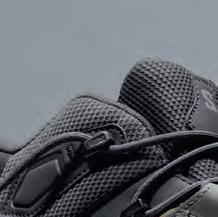

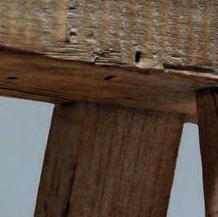












A resilient combination of Matryx ® technology, Gore-Tex waterproofing and stitched upper construction keeps you protected no matter where the trails take you.






Providing ultimate stability from within, without restraining your stride.




“I’VE FELT COMPLETELY ALONE AND AT PEACE IN THIS FOREST...”


Epping Forest
Location: Essex
Well-known to many Londoners, Epping Forest is a haven to those seeking nature near the Big Smoke, and while it might be popular, it’s still fairly easy to find pockets of peace within the 6,000 acres of ancient woodland here. It’s a haven for wildlife too. If you’re quiet enough, you might even stumble across one of the muntjac deers rustling in the rust red bracken.
“Epping Forest is the perfect escape to the loud and busy London life”, says resident Londoner Cinthia Alberdi. “It’s close enough that I can just run away to the forest for the day and be back in time for dinner. It also feels very big. I’ve had moments where I’ve felt completely alone and at peace in the forest, which is almost impossible in the city.”

LOADED UP CLIMBING P ACKS

Montane Valen 40 + 5L
£150
This pack from British brand Montane has a clever gusset that expands the volume, upping the capacity from 40 to 45 litres. Details include a removable hip belt pouch and aluminium stay, gear loops, rope carry and ice axe attachments. A continuous webbing construction gives 360° compression for maximum stability, whatever your load.



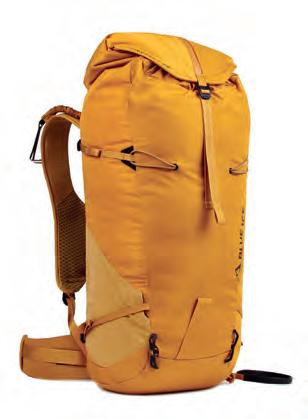
Blue Ice Firecrest 38L
£180
This all-round alpine performer will take you from spring ski tours and summer climbing to winter mountaineering. The 2-litre lid pocket will swallow your hat, gloves, and other essentials. Accessible from the top or side panel zip, the main compartment includes a removable avalanche tool kit organiser. A tuckaway hip belt doesn't get in the way of your harness' gear loops.





Rab Latok 38L
£160









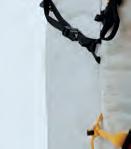



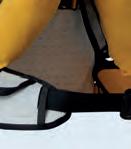





The North Face Summit Advanced Mountain Kit 40L
£360

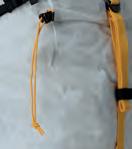
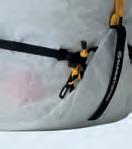


This 40-litre pack is built for alpine-style mountaineering, delivering a lightweight carry without compromising on technical performance. It features modular ice tool attachment points, reinforced high-tenacity webbing, and removable components, such as hip belt pods and a top lid. Made from superlight yet durable ripstop Dyneema, the fabric is seam-taped and fully waterproof.



At 860g, this pack is already impressively light. Ultra-minimalist climbers can save a further 250g by removing the back panel foam, hip belt, and rope strap. Features include side compression straps for an A-frame ski carry set-up, ice axe attachments, a roll-top closure, and a snow-shedding back panel.
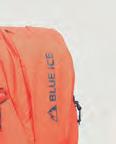




Blue Ice Stache Ice 50L
£230





Osprey Mutant 52L
£195


This 50-litre pack from French brand Blue Ice is made for climbers tackling remote alpine faces and gear-heavy winter routes. Made from high-spec 210-denier ripstop fabric, it has storage for a snow shovel, avalanche tools, and ice axes. Other details include side panel access, a removable steel frame, and stretchy hip belt pockets.

In the Mutant 52, Osprey combine their pack-making heritage with modern materials for outstanding mountain performance. The 52-litre capacity makes it ideal for big days out or even multi-dayers. Details include ice axe, rope, and ski carry systems, plus a lightweight, removable frame. A narrow pro le keeps it close to the body.
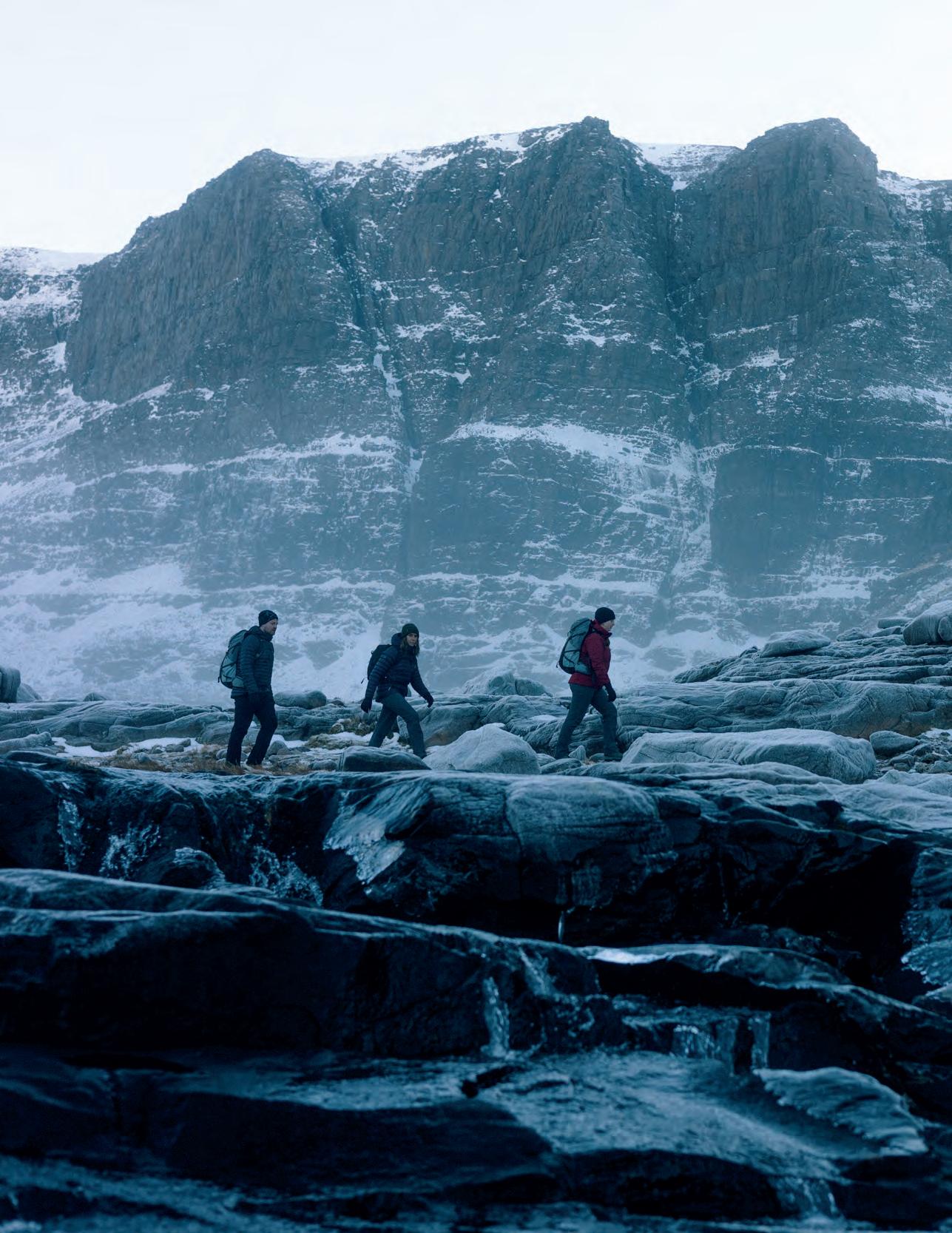
Hiking

WINTER’S COLD EMBRACE


With the classic lines of Beinn Eighe in full winter condition, Sophie Nicholson heads into the coire – not to climb, but to witness the mountain in all its frozen grandeur
It’s still dark when we reach the car park at the foot of Beinn Eighe. A star-slicked, soundswallowing darkness that seems to stretch inwards as well as out. The crunch of gravel under boots, the metallic clink of axes and crampons, the hiss of a Thermos lid breaking its seal – everything sounds close and loud in the pre-dawn hush. It’s early December, but it feels like the depths of midwinter. The air bites any exposed skin. Ice creaks underfoot.
Despite the eye-rubbingly early hour, the place is already buzzing. Head torches flicker like slow fireflies, bobbing between parked vans and frost-glazed windscreens. Climbers move about in small knots, adjusting packs and coiling ropes with the kind of efficiency that comes from years of winter experience.
Everyone’s here for the same reason: a solid freeze and clear skies have aligned, so the classic winter lines on Beinn Eighe are in. The Triple Buttress looms somewhere in the blackness, waiting.
“Let’s get a wriggle on,” someone mutters, zipping up a jacket and hauling on their pack. The mood is one of quiet anticipation. Even in the dark, there’s electricity in the air.
We’re not climbing today. Instead, we’re heading for the coire to get a close-up view of the Triple Buttress – Beinn Eighe’s iconic cathedral of rock and ice.
We shoulder our own packs which are heavy with winter walking gear: insulated layers, food, maps, spare gloves, microspikes, emergency bivvies, poles, flasks of coffee. Hand warmers. Big down jackets stuffed into the bottom like safety nets. This isn’t just a walk. In Scottish winter, nothing is ever just a walk.
The walk in
Our breath steams in the beam of our head torches, coiling like smoke into the night. It’s 7.30am on the 11th of December, and the temperature is well below freezing. The trail threads away from the car park and up onto the open hillside. The cold is sharp and unrelenting, a physical presence that presses against the skin. My body still feels sluggish, limbs not yet fully awake, but my brain is already zzing with anticipation: the promise of winter light, the psyche of being on the hill with mates, moving steadily together through this wild, frozen world.
Somewhere around 8am, the sky begins to shift. A faint grey-blue blush leaks into the east, followed by strokes of pink and amber. Behind us, the world is on re: Beinn Damh bathed in morning gold. Ahead, the trail steepens and hardens. Microspikes go on. Poles come out. We stop to drink, to snack, to stu gloves back into sleeves. Somewhere high above, a raven croaks, trailing slow circles in the cold morning air.
As we gain height, we enter the clag. Our world becomes smaller and more intense as we’re cloaked in the thick of the freezing fog. We’re quiet now. All you can hear is the steady crunch of boots and the occasional clack of poles.
We rise through the thinning air, switchbacking onto higher ground, and suddenly we’re above the cloud – an inversion stretching out like a sea of cream. The summits of Baosbheinn and Beinn an Eoin rise like islands above the Flowerdale forest to the north. There’s a collective pause.
“Wow,” someone says. No one bothers to say anything else.
We keep climbing, the light intensifying with each step as we ascend through the haze.
Reaching the Coire
And then, after a long pull around a shoulder, we see it: Coire Mhic Fhearchair. The great amphitheatre reveals itself with almost theatrical timing – just as the sun tips over the ridgeline, catching the tops of the buttresses in vibrant gold. The lochan is completely frozen, mist curling just

“THERE’S NO WIND. THE FREEZING COLD AIR FEELS HELD IN SUSPENSION.”
above its surface, a blend of mirror and rime. And beyond it, rising like a giant stone anvil into the pale sky, the Triple Buttress – a fortress of ice and time.
We stop. We all stop. It’s massive. Beautiful. Possibly terrifying? De nitely inspiring.
One of the group lets out a low whistle. “It looks like the flippin’ Eiger.”
The whole scene literally halts us in our tracks. It always does. I’ve been to this remarkable, otherworldly place before – skipping along the ridgeline in trail runners, sweating under a bluebird July sky, the loch inviting, the buttress dry and stripped back. But this is something else. Winter has dressed the mountain in staggering myth. I nod, not speaking. There’s something reverent about the place. I think about the climbers now halfway up their routes; tiny gures dotted around the buttress reaping the rewards of their commitment to the ‘blink and you miss it’ Scottish winter climbing cause.
We drop our packs near the lochan and sit for a moment. A raven swings overhead, calling once before banking towards the cli s. There’s no wind. The freezing cold air feels held in suspension.
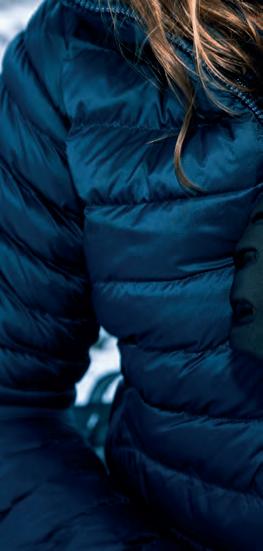


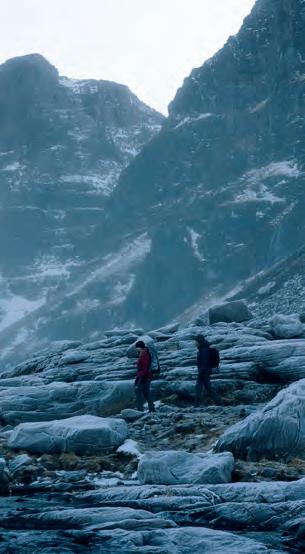


Full Torridon immersion.
Images by Johny Cook.
“ONE OF THOSE WINTER DAYS THAT BURNS INTO THE MEMORY.”



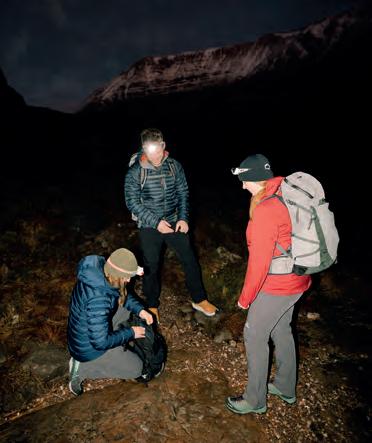
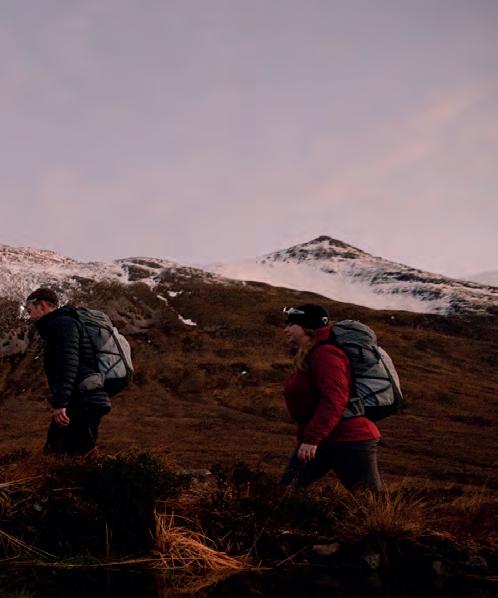

Autumn meets winter in Coire Dubh Mor.
The Heart of Beinn Eighe
Beinn Eighe, Gaelic for ‘File Mountain,’ is the eastern anchor of the Torridon range, home to two Munros – Ruadh-stac Mòr (1,010m) and Spidean Coire nan Clach (993m) – and Britain’s oldest National Nature Reserve. The geology here is ancient and unusual, representing a geological time capsule. The base is carved from ancient Lewisian gneiss, overlaid first by red-brown Torridonian sandstone deposited around one billion years ago, and then capped by a pale layer of Cambrian basal quartzite that’s roughly 550 million years old – a striking contrast that crowns the ridges with ghostly pale summits.
The Triple Buttress itself is the most famous feature of this vast and complex mountain, a cathedral sculpted from some of the oldest rock on earth. In 1951, an RAF Lancaster crashed into it in bad weather. All eight crew perished. Wreckage still lies scattered among the rocks below, sometimes visible when the snow recedes.
We don’t go higher today. The coire is our destination – and the journey. The sheer scale of the buttress, the silence, the light. It’s everything you come to the Highlands in winter for.
After a long while, we shoulder packs and begin the walk out. The light is already shifting and softening. Shadows pool again in the hollows. Daylight in December is precious and short-lived after all. The inversion has filled back in, but the air remains sharp, blue-edged.
Back to the Dark
We descend steadily, the path familiar now, the surface slick in places and sunlit in others. There’s a quiet satisfaction in the group.
By the time we reach the car again, it’s dark. A different dark to this morning; gentler, more satisfied. The car park is nearly empty now, though head torches still bob on the hillside far above us.
We take off our boots and remove excess layers. Someone cracks open a flask. Steam curls into the night.
“Well, that was pretty special,” I say, and everyone nods.
It was one of those winter days that burns into memory – not just for the views or the silence or the light, but for the feeling of just being there. Being out in it. Part of the mountain. Part of winter. Alive.
Sophie Nicholson is an avid hiker, backcountry skier, trail runner, climber, and writer. In her own words, she doesn’t do well indoors.
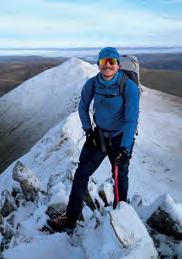
GEAR
Mountain Equipment Makalu
In winter, you need a durable and protective shell that can withstand the demanding conditions. The Makalu is ideal, with a secure hood and high collar to shield you from the elements.
Arc’teryx Nuclei SV
A big, warm belay jacket will prevent heat loss during static moments on a hike. Sized to fit over your waterproof, synthetic options like the Nuclei SV will continue to insulate even when wet.
Montane Fortes Lite
Highly breathable synthetic insulation works incredibly well under a shell. This one lets heat and moisture escape, regulating temperature while reducing chances of overheating.
Black Diamond Glissade
For winter hikes, look for a glove like the Glissade. Waterproof, insulated, and with a dextrous fit, it gives midweight warmth to keep you comfy while avoiding sweaty hands.
Osprey Talon Pro 30
There’s more to carry when it’s cold, with bulky clothing, safety gear, and extra food all vying for room in your pack. The 30L Talon Pro has lots of pockets to keep everything in check.




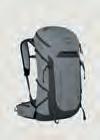
ALLEN, FROM THE KESWICK STORE TEAM
SHOP THE RANGE

ALL-TERRAIN TREADS
FOUR-SEASON BOOTS

La Sportiva Men's Trango Alpine
GORE-TEX
£360 • Rating B2
This is a boot designed to excel on mixed routes, o ering C1 and C2 crampon compatibility alongside ankle mobility. It makes traversing technical terrain and awkward steps easier, while the sole, which negates ground impact, improves traction on a variety of surfaces, and gives reliable downhill braking.



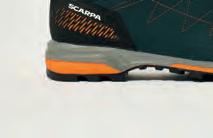

Scarpa Men's Zodiac Trek GORE-TEX
£275 • Rating B1


Designed to work across all seasons, this trekking boot has C1 crampon compatibility and features high-quality, durable materials throughout, including a Perwanger water repellent suede upper. Its wraparound construction provides a sock-like t, while the Vibram Mont outsole maintains its performance at low temperatures.


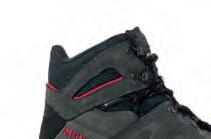



Meindl Men's Antelao GORE-TEX


La Sportiva Women's Aequilibrium
Trek GORE-TEX
£265 • Rating B0
Influenced by mountaineering technology but designed for long hikes over challenging terrain, this boot combines comfort and durability. A supple leather upper and waterproof GORE-TEX lining keep feet dry, while a grippy sole and flexible ankle make steep slopes easier to tackle.



Made for demanding hikes in places like North Wales, the Lake District and Scotland, this supportive boot combines suede and mesh uppers with a waterproof GORE-TEX lining. A wide forefoot and cushioned midsole enhance comfort, while the protective toe rand and Vibram outsole deliver reliable grip and durability on rugged ground.

Salewa Women's Mountain Trainer 2 Mid GORE-TEX
£245 • Rating B0


Salewa’s Mountain Trainer 2 is ideal for winter hikes when the conditions don’t require crampon-rated boots and you want to feel light-footed and agile. Its footbed has a removeable insert, allowing you to fine-tune the internal volume, and to-the-toe lacing adds further fit personalisation.






Scarpa Women's Ribelle Lite H-Dry
£335 • Rating B2


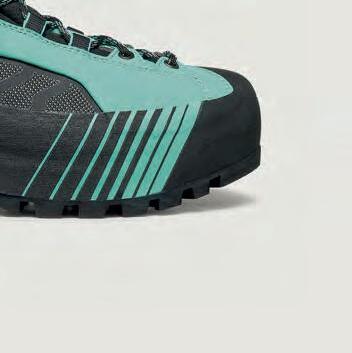
Ideal for mountaineering, scrambling and winter walking, this highly durable but still surprisingly light boot supports fast, technical days. Its HDry waterproof membrane consists of 53% bio-based polyurethane, and this is backed up by an insulating lining that helps to regulate temperature and manage moisture.


WALK IN WINTER (SAFELY)
Glenmore Lodge mountain instructor Derek Bain recalls a near-miss on the hills and shares his essential tips that can help you avoid similar common mistakes in winter.

I had just noticed we were slightly off the crest of the ridge and needed to regain it when Aaron slipped. He accelerated down the frozen snow, knocking another two people off their feet. Luckily, they both arrested their slide with ice axes, but Aaron continued falling until he hit a patch of small rocks and stopped. Relieved that he’d stopped, Graeme and I descended to help him. That’s when Graeme also fell. He slipped down the ridge before going airborne and disappearing over a steep edge and into the cloud. Gone.
Fortunately, both Aaron and Graeme survived –shaken but relatively unscathed.
So, what went wrong? First, our planning was inadequate. Although we had a vague idea it could be wintry, this was autumn and there was no
visible snow on our departure from the car park. As a result, we chose not to bring crampons. After reaching our summit we tried to continue onto a more serious peak, but our lack of experience and skill navigating off path in poor visibility was the next thing that contributed to the accident. We were only 50m off route, but this had serious consequences which we didn’t recognise until too late. We were on hard snow and unequipped to deal with it.
I’m a lot older and wiser now, with a Winter Mountaineering & Climbing Instructor qualification under my belt and years of experience training future mountain guides. Looking back, the situation was a hugely formative early experience of the challenges posed by winter mountains. Here are some of the
Mountain Skills
things that I should have known, and that you need to know to prevent yourself from getting into a situation like we did all those years ago.
Planning
Monitor the weather and conditions in the weeks or days leading up to your trip. Use mountain forecasts and the avalanche forecast if there is one for your area. Identify how wind speed and direction, freezing level and precipitation are combining to distribute and influence snow and ice conditions. Mountain forecasts will also detail the cloud level and visibility. Identify potentially hazardous areas and commitment or turnaround points. Pre-identifying these locations can help your decision making on the hill, acting as a prompt to reconsider your situation. Escape routes have been the scene of many an epic tale; plan them with as much care and attention to detail as your main objective. Finally match your plan and route to your navigation skills and experience in winter conditions and pack accordingly.
Packing and Equipment
Be prepared with a layered clothing system that wicks away moisture from the skin and protects from the elements. Using a synthetic insulated mid layer is often better than down insulation as it will work when wet and can be layered over the top of wet outer layers in an emergency. Have multiple pairs of gloves rather than one big warm pair. Gloves wet out and become cold throughout the day so start with thin gloves at the beginning
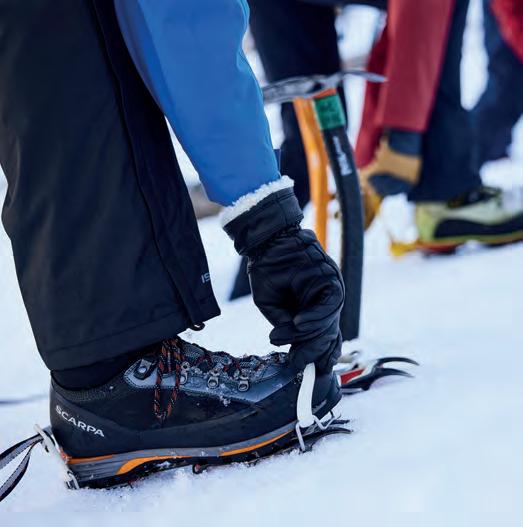

of the day and change to warmer and waterproof ones as you gain height. A hot flask, high calorie food, waterproof map and compass are part of my standard winter rucksack. To add to that would be my emergency gear, first aid kit, group shelter, spare puffer jacket, mobile phone and waterproof notebook. Goggles can be hugely beneficial in snowy and windy conditions, not just for keeping glare out of your eyes but to stop them being scoured with snow and ice. Of course, part of the reason for the incident described at the start was a lack of ice axe and crampons. The decision on whether to take them or not might be the crux
“LOOKING BACK, THE SITUATION WAS A HUGELY FORMATIVE EARLY EXPERIENCE OF THE CHALLENGES OF WINTER...”

for the inexperienced, as it was for us. There’s also the question of whether micro-spikes would be suitable. If you have the choice, bear in mind that crampons can handle any snow or ice conditions, the limit being the skill of the practitioner. Micro-spikes require very little skill to use but are only useful in speci c conditions.
On the Journey
The first thing to consider when setting off is whether the conditions are as forecast. You should then monitor the weather throughout the journey and consider whether your plan is still suitable.
Winter navigation can be more challenging. It helps to consistently track your progress, ticking o easily identi able land features as you go. Attach your compass to a pocket zipper and have your map folded down small and stored away in a waterproof case. We didn’t have mobile phones or GPS mapping when we had our incident. Although these might help today, it’s important to be aware of the winter challenges in using them. Battery life in freezing conditions is poor, wet touchscreens can make them impossible to use and big gloves don’t work with small ddly things.
Eating a little, regularly, rather than stopping for a prolonged lunch is often more practical in winter. Put high-calorie, easy to eat snacks in your pockets. This will help to keep you warm and focused.
One of your most important decisions is when to get an ice axe out or put on crampons. There’s no easy answer to this as it depends on a combination of snow quality, winter boots and personal skill, but sooner rather than later is always the best approach. Having an ice axe in hand can prevent slipping, either by improving balance, posture or improving steps.
To Err is Human
Although we can identify a navigation error and lack of winter equipment as contributing causes to my incident, one of the root causes was poor decision making. A lack of knowledge and experience makes it di cult to recognise situations where accidents are approaching. To help gain experience safely I attended some practical winter skills training. I also chose walks carefully by avoiding complex navigation on poor visibility days and any steep ground when there was an avalanche hazard. Gradually over the years, I built up my experience to prevent me from making mistakes and I haven’t had such a close call since that one over thirty years ago.
Our training partner Glenmore Lodge has supported many of our team in developing their skills and helping them become Mountain Leaders or International Mountain Guides. It’s a great place to begin or build on your outdoor learning. Learn more at glenmorelodge.org.uk.



Leki Sherpa
£140








EMERGENCY ESSENTIALS







Lifesystems
Mountain
£43
WINTER SAFETY GEAR





Sold as a set, these four-season, telescopic poles have a durable aluminium construction and include spare wide baskets for snowy conditions. Improving your stability on uneven terrain, you can also use them to assess ground conditions, aid with river crossings, and take the strain o tired muscles.


First Aid Kit
This comprehensive kit, which is designed for trips over challenging terrain, contains 52 items covering everything from blisters to burns. Lifesystems’ QuickFind system makes key supplies easy to locate in emergencies and the compact case is built to last and stows away easily.



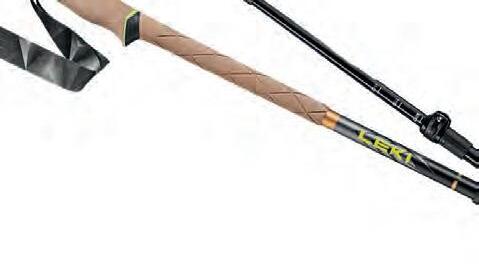

Lifesystems
Ultralight
Survival Shelter 2
£70
Weighing just 215g and quick to deploy, this survival shelter from Lifesystems provides essential emergency protection for two people, or a convenient sheltered spot for a break on the hill. It features waterproof seating panels, an air vent, reflective strips, and packs away into an integrated stu sack.





Lifesystems
Hurricane
Whistle
£5.50










While backpacks often come with built-in whistles, in many cases, they aren’t able to reach the level of loudness required in an emergency. This achieves a massive 122 decibels and a tri-tone sound, making it one of the loudest whistles currently available on the market.
Silva



Expedition 4
Compass
£38



This 36g compass is designed for experienced outdoor enthusiasts and professionals, featuring multiple measuring scales, a magni er for map reading, and luminous markings to aid night use. The compass housing is durable, and the baseplate has rounded edges for hand-held comfort.













Petzl e+Lite Head Torch
£29


With a 40-lumen output, this isn’t the brightest head torch, but it weighs a featherlight 26g, has an IPX7 waterproof rating, and can be stored with batteries for up to 10 years. Made for emergency use, it features white and red lighting with continuous and strobe modes to aid night signalling.

WINTER IN WALES
Back in 2021, our writer Will Renwick completed a solo, selfsupported run linking every mountain in Wales, camping each night along the way. Since then, he’s been revisiting each summit while researching a guidebook of day walks for those keen to tackle all 189 peaks in the most e cient way. Here, he shares some of his favourite routes for strapping on the crampons and embracing winter conditions.

Twmpa and Rhos Dirion - Bannau Brycheiniog (Brecon Beacons)
Throughout most of the year, the upland moorland of the Black Mountains can be a boggy place to explore, so I love coming here when there’s a hard frost on the ground as walking along the long whaleback ridges becomes far less arduous. What a part of the world for a post walk reside pint too, with Llanthony Priory Cellar Bar and the Bear Hotel of Crickhowell personal favourites.

Cribyn - Bannau Brycheiniog
Even in winter, Pen y Fan is undeniably a busy mountain, especially when approached via ‘the motorway’ from Pont Ar Daf. But that shouldn’t deter you. There are so many di erent routes to the top that you’ll always be able to nd a quieter approach. Or you could skip Pen y Fan’s often crowded summit altogether and enjoy the jaw-dropping views from one of the other peaks in the Pen y Fan ‘horseshoe’, such as Cribyn – one of my favourites for a sunset view.
Craig Cerrig-gleisiad - Bannau Brycheiniog
This is a relatively quick and easy climb, but still a rewarding one. I love the rst reveal as you reach the stone stile after setting o from the layby on the A470 and are suddenly confronted with the mountain’s craggy cli . In winter, it can take on a distinctly alpine appearance. By no coincidence, this is also the furthest south in the UK where you can nd purple saxifrage, a rare Arctic–alpine plant.
Craig Cerrig-gleisiad
Cribyn



Moel Siabod - Eryri (Snowdonia)
It’s said that on the right day, you can see 13 of the 14 highest mountains in Cymru from the 872-metre top of Moel Siabod without even needing to turn your head. There are numerous routes to the top but the most straightforward path starts from the National Outdoor Centre at Plas y Brenin, which also runs guided walks to the summit – an excellent option for anyone looking for their first proper winter mountain experience.
Cadair Idris - Eryri
Legend has it that if you spend the night on the summit of Cadair Idris, you’ll wake up either a poet or completely mad. I once tested the theory and ended up waking in a slightly delirious state on the floor of a public toilet – so perhaps there’s something in it (a story for another day!). My favourite winter route is the Minffordd Path, when the rocky cliffs can be dusted with snow and Llyn Cau lies hidden beneath a thick layer of ice.
Yr Wyddfa (Snowdon) - Eryri
Like Pen y Fan, this is a mountain that, while busy, is still a highly rewarding climb, and again, there are quiet ways up it – the Rhyd Ddu Path being a personal favourite for a bit more solitude, especially in winter. All of the mountains in this list will be a challenge in winter conditions, but Yr Wyddfa can be especially gnarly – there’s a reason Edmund Hillary used it for practice ahead of his first Everest ascent.
Peak Bagging: Wales (Vertebrate Publishing) will be on sale in Spring 2026.
Cadair Idris
Moel Siabod
Yr Wyddfa

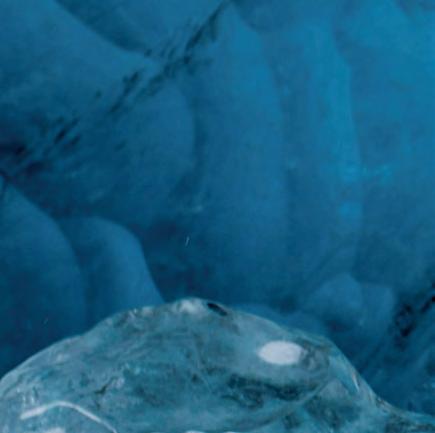


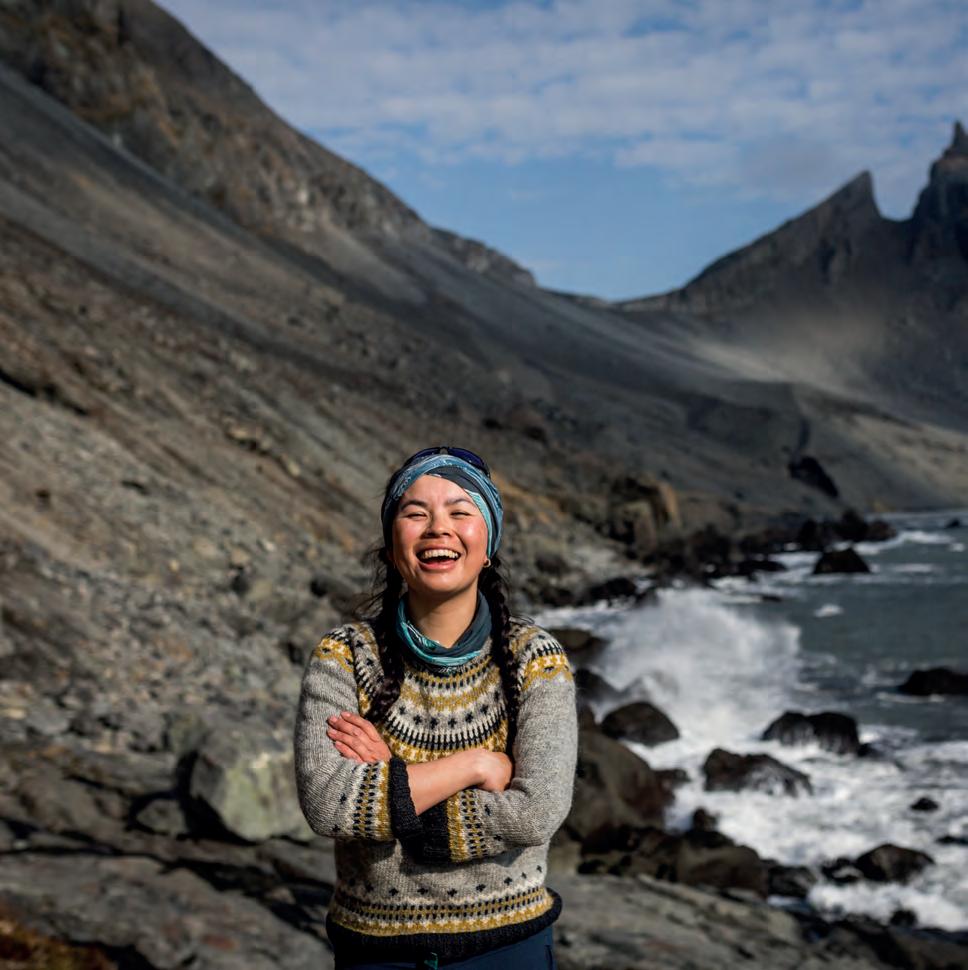

FROZEN FRONTIER
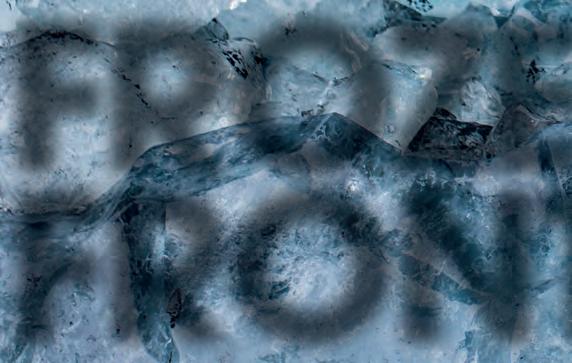



Iceland in Winter
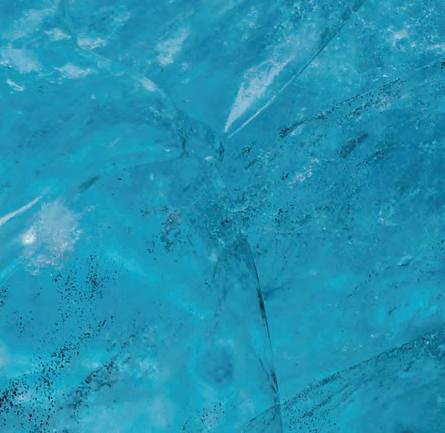


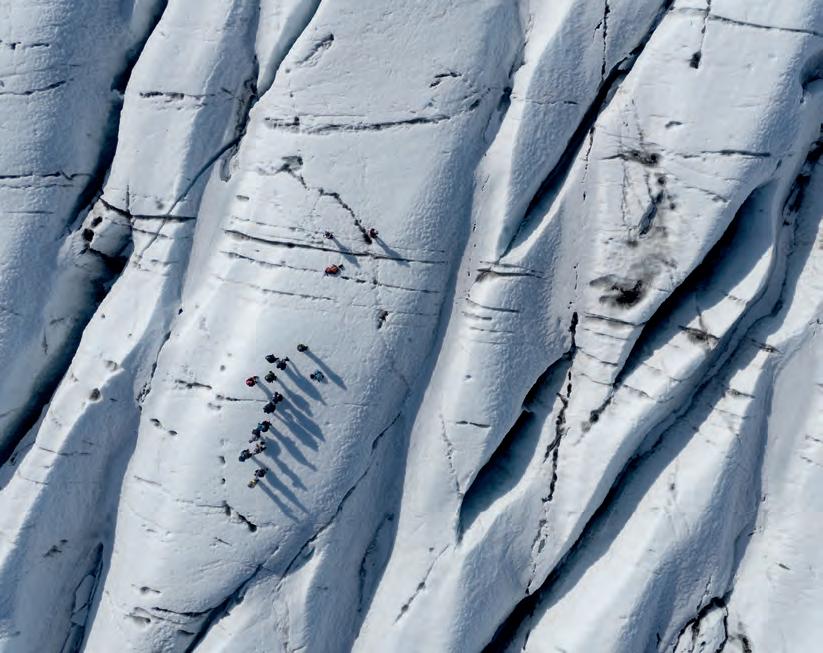

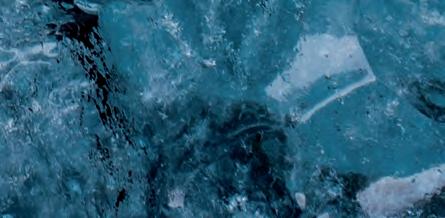

Jessie Leong gives us a glimpse into the life of a glacier guide in Iceland, navigating hidden ice caves and the long, frozen winter nights of the north.
Shades of sapphire, teal and deep ultramarine contrast against luminous walls of dense glacial ice. Tiny beads of air, trapped in time, shimmer like bubbles frozen mid-escape. We’re standing in a connection of chambers, like a set of lungs linked by veins and arteries. It’s a startling, beautiful spectacle. Between moments of almost pitch black, light penetrates through and illuminates various ante-chambers, creating the feeling of being in a blue orbital.
The rst impression when approaching Breiðamerkurjökull never fades. A glacial tongue that flows down the mountains from Vatnajökull, Iceland’s largest ice cap, the scale of it is immense –
mountains holding it in like fences failing to contain a wild, unruly garden. Ahead, the wall of ice rises high, and the crevasse eld snakes away, its ridges marked with black volcanic ash from an eruption in 1727. It’s a place where re and ice meet, where the land is alive with history.
Neighbouring glaciers like Falljökull and Svínafellsjökull may, at face value, appear even more dramatic, but this glacier holds the real treasure – the jewel in the crown, or rather, a hidden hole in the ice. And it’s my job to take people down into its depths.
Life on Ice
Technically, ice caves are moulins; tunnels formed when meltwater on the glacier surface bores its way down through the ice. These channels merge, carving holes that grow wider as water carries rock and sediment away. Sometimes stones from the ceiling fall, leaving behind geometric patterns embedded in the walls, like veins in turquoise glass.
The glacial ice is so dense that only the weaker blue and ultraviolet wavelengths of light penetrate, painting the caves in extraordinary hues. On Breiðamerkurjökull, caves can last months or years. Some stretch 40 metres deep on the east side of the glacier and twice that on the west. Their scale is both awe-inspiring and intimidating,
“NOTHING CAN PREPARE YOU FOR WHEN YOU FIRST SEE THE AURORA UNFURL...”
and exploring them safely requires a guide with ropes and rescue training in preparation for the event of a flood or the serious risk of rockfall. This is not terrain for the unprepared. Rescue services are limited and urgent medical care is hours away in Reykjavík.
Life as a glacier guide often feels like stepping into an action lm. After bouncing down twisting mountain roads in a superjeep, the work begins with brie ng clients on kit: helmets adjusted, microspikes tted, crampons tightened. The walk to one of the main caves, Sapphire Cave, crosses rough moraine, gravel ridges, and a rickety bridge before the rst step onto the glacier.

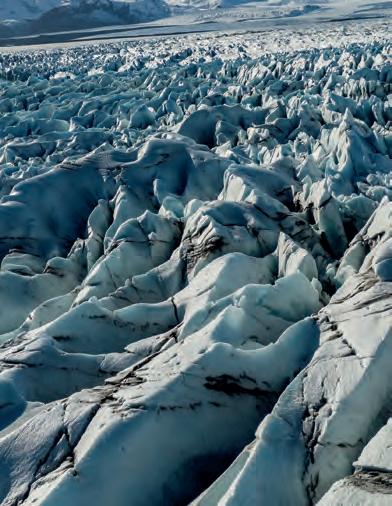







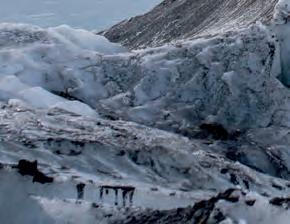





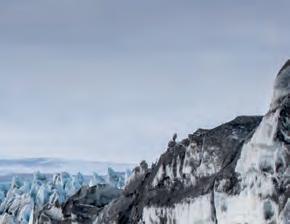

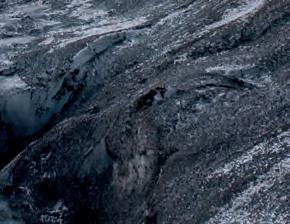


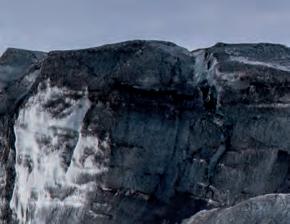




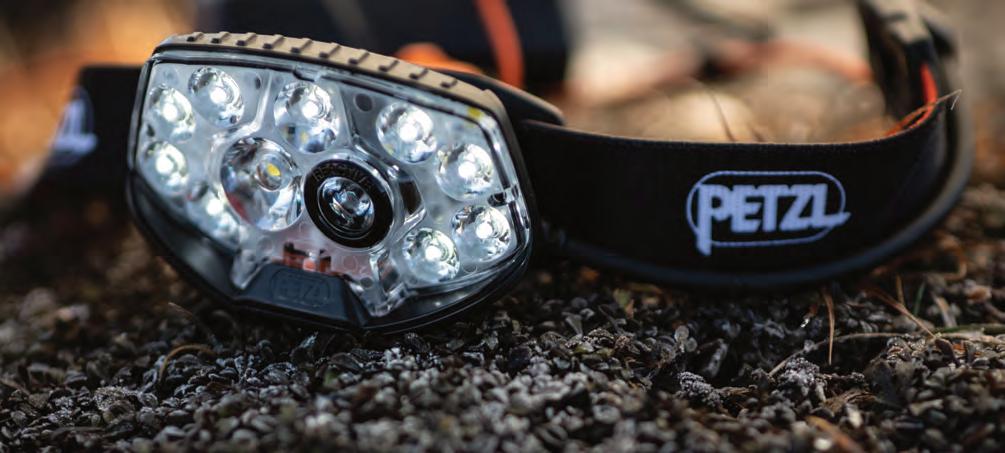




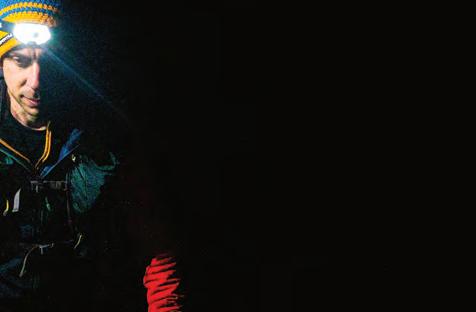

More power, updated technology and enhanced design. The new NAO RL rechargeable headlamp provides 1500 lumens of REACTIVE LIGHTING at just 145 grams. The rear USB C battery with integrated red light and easy strap adjustment provides exceptional comfort and balance. petzl.com
NAO RL ®
“I’VE ALWAYS HAD THIS FEELING THAT THIS KIND OF JOB ROLE WON’T BE POSSIBLE ONE DAY.”
For six months of the year, this becomes my o ce. It is an intense, physical job, but one that o ers rewards, mainly in the form of natural beauty. What led me here? Iceland called to me for its blend of wildness and quality of life. Where else can you nd geothermal pools on your doorstep, or watch the sun paint glaciers pink in midwinter? Since 2019 I’ve spent three winters here, where I’ve snowmobiled across hyaloclastite ridges, heli-skied in Tröllaskagi and kayaked on the Greenlandic Sea.
I’ve always had this feeling that this kind of job role won’t be possible one day. And if you had


the chance to tell stories and show people the spectacle of walking on hard ice formations, where one can view the sea at the same time as the crater rim of Iceland’s highest mountain over 6,000 ft high – wouldn’t you also jump at the chance?
Window Weather
I often spend my downtime going out on the glacier with friends to practise ice climbing and crevasse rescue in order to prevent any fading of my skills. If I need to get groceries, I head to Vík, where I can also use the swimming pool, or I’ll go as far as
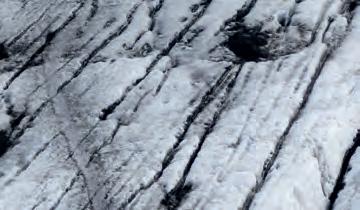
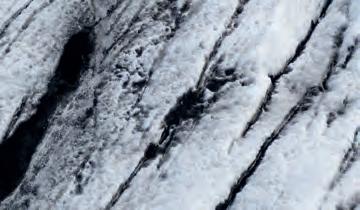






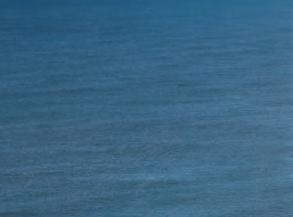
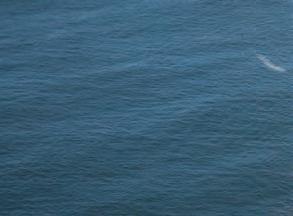

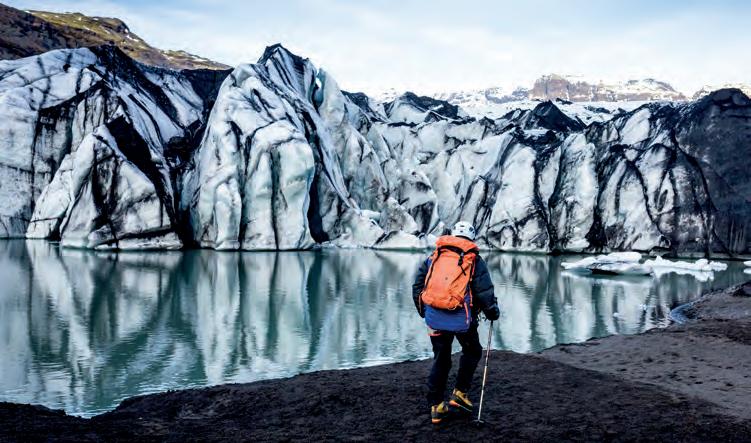







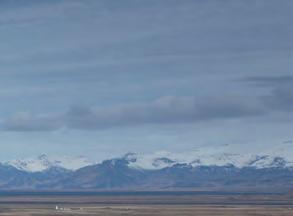
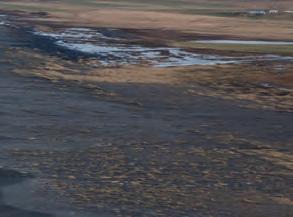








Reykjavík to get a wider range of items. Life in the city is full of admin and jobs and grabbing time with friends to decompress from the whirlwind of an intensive work schedule. Often, my working days are long – 12–14 hours at a time – so I sometimes head to the forest at Heiðmörk to decompress.
While there are many highlights to living here, it comes with its challenges, and anyone who’s not really into outdoor activity will nd limited stimulation. Summer is a busy, bustling season packed with tourists and campervans, but winter has a brutal edge to it that brings the daily risk of frostbite and chilblains. I rely on Seasonal A ective Disorder (SAD) lamps to negate the e ects of the shortness of days, when daylight can be reduced to just four meagre hours.
On the flipside, these long winter nights give plenty of opportunities to witness the aurora. Nothing can prepare you for the rst time you see them unfurl. In 2025, the sun is at solar maximum, making the lights even more frequent and powerful. Some nights they appear as pale ribbons. Others, as brilliant green arcs or sudden bursts of zzling colour. One New Year’s Eve, I stood outside with Katy Perry’s Firework playing on a small speaker. Above, the entire sky exploded in a dazzling aurora corona. A spectacle beyond words – pure magic.
What has surprised me about living here is




“WINTER HAS A BRUTAL EDGE TO IT THAT BRINGS THE DAILY RISK OF FROSTBITE...”
how Icelandic my appreciation of life has become. There’s an uno cial phrase that’s used a lot here, Þetta reddast, which means ‘it will all work out ok’. It perfectly sums up what it’s like to keep persevering through the winter months. Another phrase is gluggaveður, or ‘window weather’. Iceland is notorious for strong winds and fast-moving weather systems, and living here, you gradually learn to notice and appreciate the moments of beauty amid its intense storms.



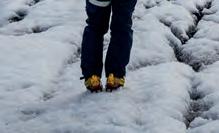

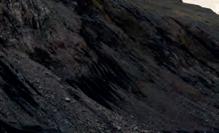
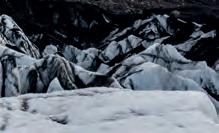


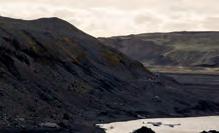


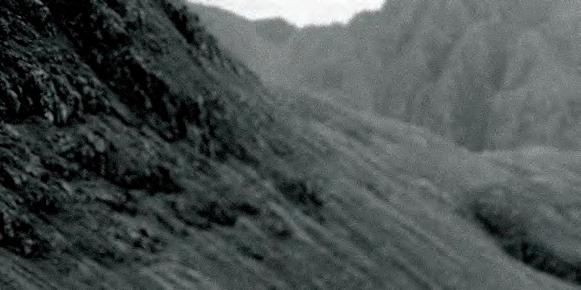

Buying Guide


WINTER TRAIL RUNNING CLOTHING
The key to running safely and comfortably in cold conditions? It’s all about having the right kit. Here are our top tips.
Trail running in winter adds a new set of challenges. When dressing for the cold and wet, it’s a ne line nding the balance between breathability and protection. The aim is to stay warm and dry while allowing excess body heat and sweat to
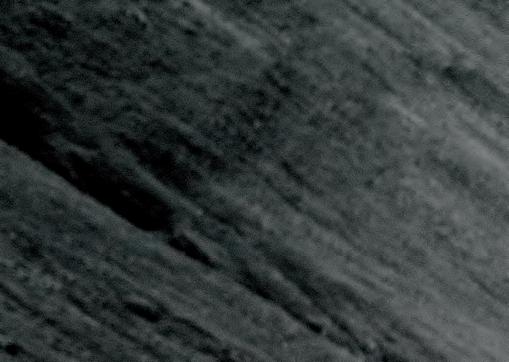

What clothing do I need?
Layers are the key to success. It’s easy to build up warmth and protection, and you can adjust the layers during your run to match changing conditions. Here’s what a complete trail running clothing system could look like:
• Outer jacket
• Mid layer
• Base layer
• Shorts/tights
• Beanie
• Neck warmer
• Gloves/mitts
• Socks
• Waterproof trousers
Unless it’s very cold and wet, you’re unlikely to need all of it. On a long-distance route or when rain is uncertain, consider wearing a running vest or pack and carrying waterproofs with you as a backup.
escape. Wrap up too much, and you risk overheating; go too light and you’ll struggle to stay comfortable. The exact layers you need will vary depending on where you’re running, how far you’re going, and the weather forecast.
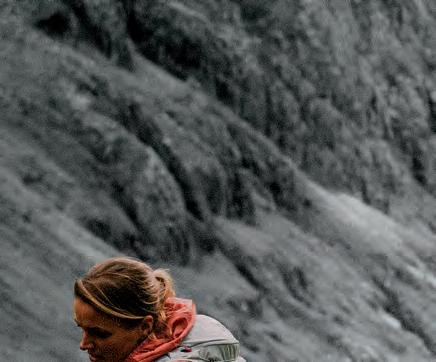






What jacket should I choose?
Waterproof trail running jackets pair superlight face fabrics with an internal membrane that blocks wind and rain.
In light drizzle or dry conditions, you may prefer to run in a windproof jacket instead. Without an internal membrane, they’re more breathable, and the fabric is more comfortable against the skin. The outer is usually treated with a waterrepellent finish.

Features on both tend to be minimal, helping to keep weight and bulk low. The hood, cu s, and hem are elasticated for an easy t and to seal in warmth. Reflective details improve low-light visibility.

Accessories


The small details can make all the difference when it comes to staying comfortable. A cap can help keep rain off your face, a headband protects the ears, and a close-fitting beanie traps heat for maximum warmth. Wearing a neck warmer will keep the chill off the back of your neck and can be pulled up around your face to counter bitter winds.
Base and mid layers
Worn next to skin, base layers help regulate temperature by drawing sweat away as you move. Typically made from polyester or merino wool, these materials wick moisture and dry fast. Merino is soft, warm, and naturally odour-resistant, while polyester is lightweight, durable, and easy to care for. Avoid wearing cotton as it retains moisture and will make you feel clammy and cold.

Some trail running tops can be worn as a base or mid layer depending on how much warmth you need. Closetting yet stretchy, the fabric often has a brushed lining for comfort. Choose a zip-neck version for extra versatility, which lets you vent quickly on the move.


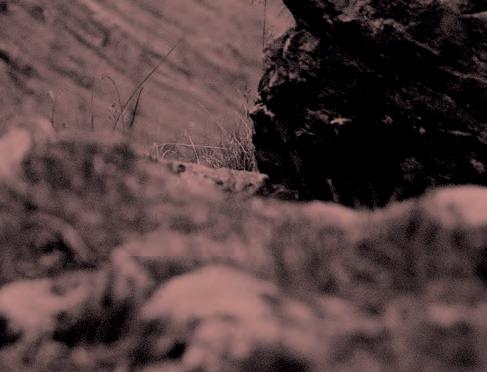
The best trail running gloves use wind-resistant fabrics with a stretchy, articulated t that allows your hands to move freely. Some include waterproof packable mitts that wrap over the top for extra weather protection. If you have poor circulation or su er from Raynaud’s, consider wearing mittens instead. As your ngers can stay together, they’ll keep you warmer than gloves.

Tights vs shorts
Trail running tights are available in di erent leg lengths. The full-length gives the most coverage, shielding you from the cold, but also things like stinging nettles – one to consider if you’re running o the beaten track. When temperatures drop, look for winter-speci c models. These incorporate elements such as windproof panels or fleece linings to increase warmth and protection.
In milder conditions or on hightempo runs, you may nd that tights will be too warm. That’s when a pair of trail running shorts can come back into play. If you’re wearing shorts and start to feel cold, adding a warmer upper layer can help to balance things out.



Protecting your feet, socks are more important than you might think. Models designed for trail running feature zonal cushioning and mesh zones to balance comfort and breathability. Arch braces and a secure heel help to stop them from moving around. On the coldest days, choose a higher calf-length sock to boost warmth levels.




KEEP THE PACE TRAIL RUNNING GEAR
Hoka Men's Mafate 5 £170
With a durable knitted upper built to withstand abrasive terrain, a fit that accommodates foot swelling, generous cushioning underfoot, and grippy 5mm lugs, this is a shoe that’s finely tuned for off-road ultra distances and high-mileage training weeks.


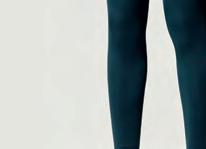



The North Face Women's Flex 25" Tight
£45
Ideal for winter trail running, these tights are made from moisture-wicking, quick-drying synthetic fabric that delivers an optimal balance of warmth and breathability for comfort in colder conditions. They also have a high-rise waistband that ts comfortably and stays securely in place as you move.








The North Face Men's Fontanales Jacket
£160
The Fontanales o ers lightweight minimalism while still meeting the water-resistance requirements of most races’ mandatory kit lists. A waterproof and windproof jacket made from recycled DryVent fabric, it packs down into its own chest pocket and features reflective detailing for visibility.



The North Face Etip Trail Glove
£50



These comfortable trail running gloves are made from recycled polyester, with a moisture-wicking lining and silicone grips on the palms for secure handling. Etip ngertips let you use your phone or watch, while the windproof over-mitts can be tucked away quickly and easily when they're not needed.
Rab Veil 12
£145
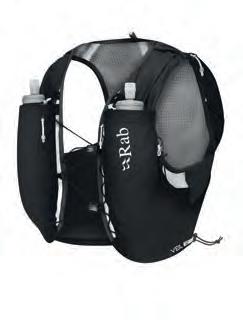
This 12-litre trail running vest feels worn rather than carried. That’s thanks to its mesh construction and bodycontouring design that minimises bounce. It comes with two 500ml soft flasks on the harness, and the main compartment has room for a bladder alongside all your essential race-day kit.

Nortec Fast Micro Crampons
£73
Made for winter trail running, these 200g ultralight micro crampons deliver dependable grip on ice, snow, and frozen trails. Twenty-one 8mm steel spikes bite securely, while the flexible elastomer harness slips easily on and o your shoes for a fast and fuss-free t, every time.
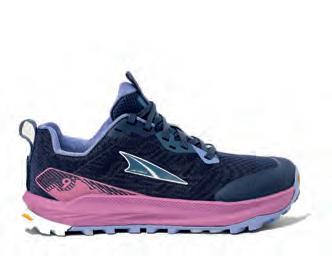
Altra Women's Lone Peak 9+
£130
This latest edition in the popular Lone Peak line combines Altra’s signature natural-feeling zero drop and roomy toe box with a reinforced ripstop mesh upper and versatile Vibram Megagrip outsole. A highly comfortable and durable choice for daily miles on mixed mountain or lowland trails.
Sealskinz Hoveton Gloves
£45
These cosy gloves from Sealskinz are made for keeping hands warm in cold and wet conditions. They feature a waterproof membrane, silicone grips on the palms, and touchscreenfriendly ngertips. A drawcord cu ensures a secure t.



SHOP THE RANGE



OUTDOOR EXTRAS WINTER ACCESSORIES

Hydro Flask Hot Flask & Cup 28oz
£45
This stainless steel flask and cup provides 30 hours of hot or cold insulation for your on-the-hill beverages. It’s leakproof, has a pourthrough cap to minimise spillages and is dishwasher safe.

Arc’teryx Bird Word Toque
£55

This unisex beanie is made from recycled polyester for lightweight warmth and quick-drying comfort. Featuring a cu ed design, six-dart ergonomic construction, and bold Arc’teryx logos, it gives performance and standout style in the mountains.
Osprey Arcane Earth Roll Top
£100

Osprey’s new 24-litre roll-top pack uses repurposed and recycled fabrics and is made in a way that requires less water and energy consumption compared to traditional methods. Its 16” laptop sleeve and multiple pockets make it perfect for daily commutes.
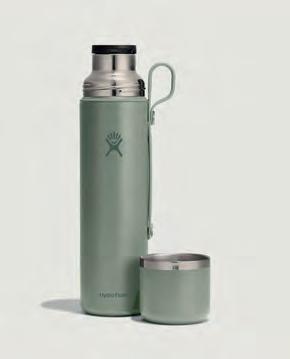

Rab Cirrus Hut Slippers
£45
Treat your feet with these incredibly comfortable slippers. They feature a breathable, weather-resistant outer made from recycled Pertex Quantum, lofty and warm synthetic PrimaLoft insulation, and cushioned foam soles.



Victorinox Climber
£40
Loaded with practical tools, this 82g penknife delivers 14 functions, including scissors, screwdrivers, two sharp blades, a bottle opener, a toothpick, and tweezers. Crafted from high-quality components, it’s a compact Swiss Army Knife for everyday tasks and adventures alike.

Black Hole Du el 55L
£160
The outer shell, lining, and webbing on this gear-swallowing du el are made from 100% recycled materials, and there’s also a recycled laminate for abrasion and moisture resistance. Designed to last and easy to repair, it features a padded base, detachable shoulder straps, and it packs into its own pocket for convenient storage.



Ru wear Summit Trex Shoes
£30
These shoes can improve your dog’s traction on snow and ice, while protecting against the cold and chemicals found in de-icing salts, which can harm their paw pads. Features include a weather-resistant upper, durable non-marking sole, and an adjustable closure for a secure t.


No Normal Co ee
£14
This Fairtrade Arabica co ee paste, sweetened with organic Swiss beet sugar, mixes with hot water to make morning camp brews e ortless. Rich with chocolate, nut, and caramel notes, it o ers 20 servings.

Gregory Alpaca Gear Box 45
£55
Keep your outdoor kit organised, protected, and ready to go. This gear box has a 45-litre capacity and an IP65-rated waterproof, dustproof construction. The smash-proof, clearview FlipFlop lid hinges open from either side or can be removed entirely for maximum storage versatility.

Patagonia

What was the adventure and why did you choose it?
The aim was to climb several 6000m peaks in the Andes that were accessible from the valley. This included Alpamayo, a stunning white pyramid with a challenging route up the SW face. It’s one of the most beautiful mountains in the world and a rewarding ascent in alpine style at high altitude.
What were the biggest challenges?
The weather and mountain conditions were not in our favour despite going in July/ August when it’s peak season. Not being able to achieve the main goals to climb Alpamayo and Huascaran was disappointing, but we had a reliable taxi driver, Armando, who was there for us whenever we were forced to change our climbing plans.
Ellis Brigham Team Talk
STAFF ADVENTURES
Alex Serban heads over to the Andes to ascend some Peruvian giants.

Name: Alex Serban
Job title: Store Manager
How long at EB: 9 years
Store: Covent Garden, London
The trip: Mountaineering in the Cordillera Blanca. High Altitude climbing in the Peruvian Andes.
What were the highlights of the trip?
The solo traverse of Nevado Ishinca in less than 8 hours from the lower refuge and successfully reaching the 5530m summit. Being able to move fast while navigating difficult terrain with open crevasses and steep slopes certainly felt like an achievement.
What advice would you give for this adventure?
Be ready to give up on your main goals if conditions aren’t in your favour. And it’s never too early to start training. Don’t eat on a budget unless you have a steel stomach and buy bottled water or filter it. The Katadyn BeFree Filter proved to be an invaluable piece of kit. My La Sportiva TX4 shoes did an amazing job throughout the trip too.

At Ellis Brigham, we run an Expedition Grant that funds staff adventures through the year, enabling our employees to experience their dream trips.

Descent from Nevado Copa to Collon Village
Nevado Vallunaraju underground ice cave
Nevado Ranlapalca in the clouds


